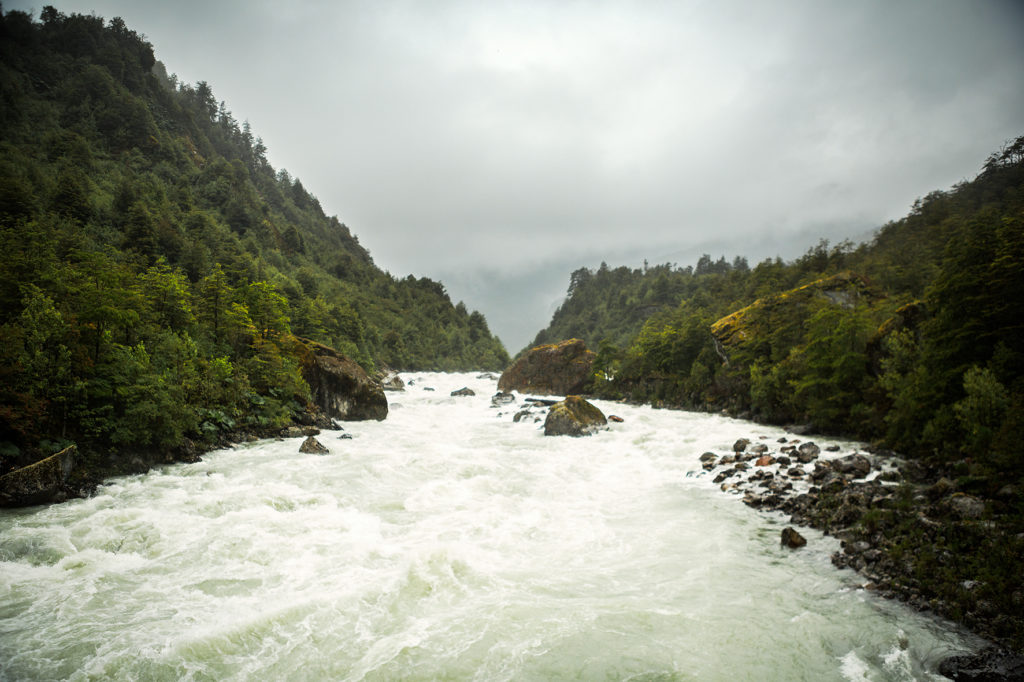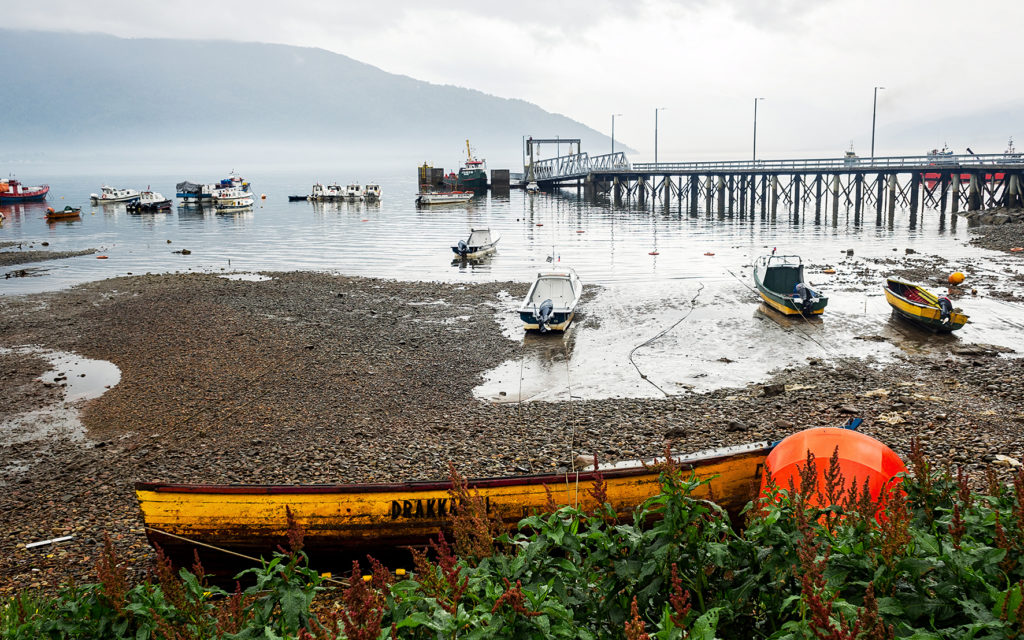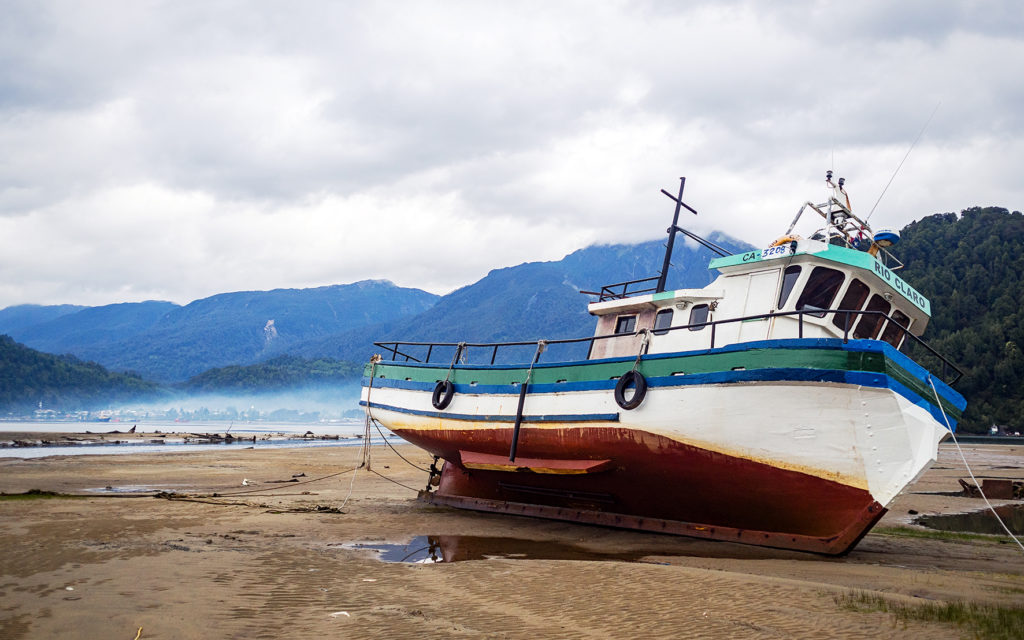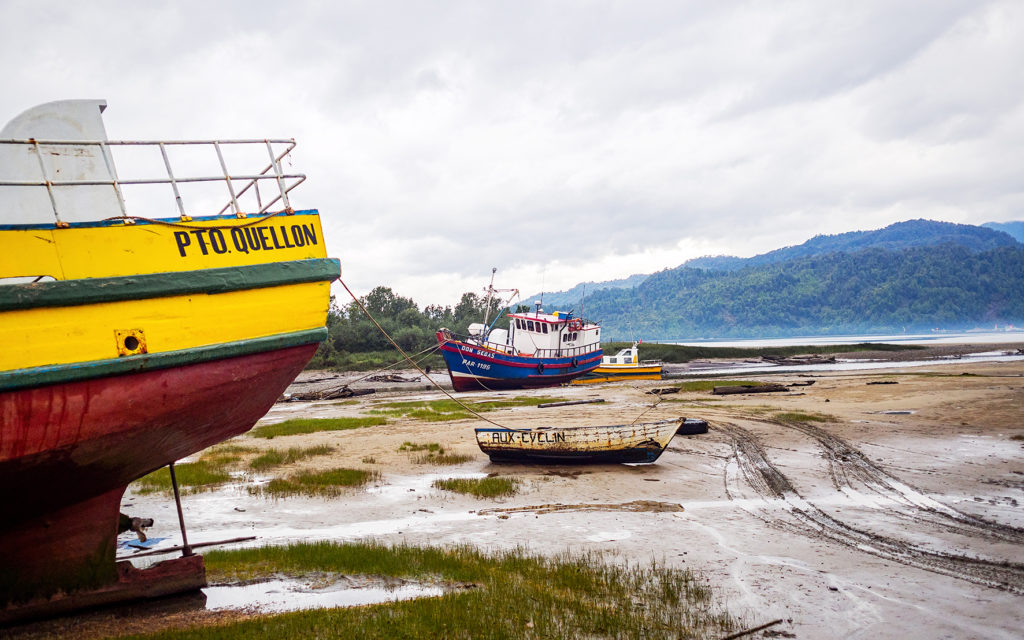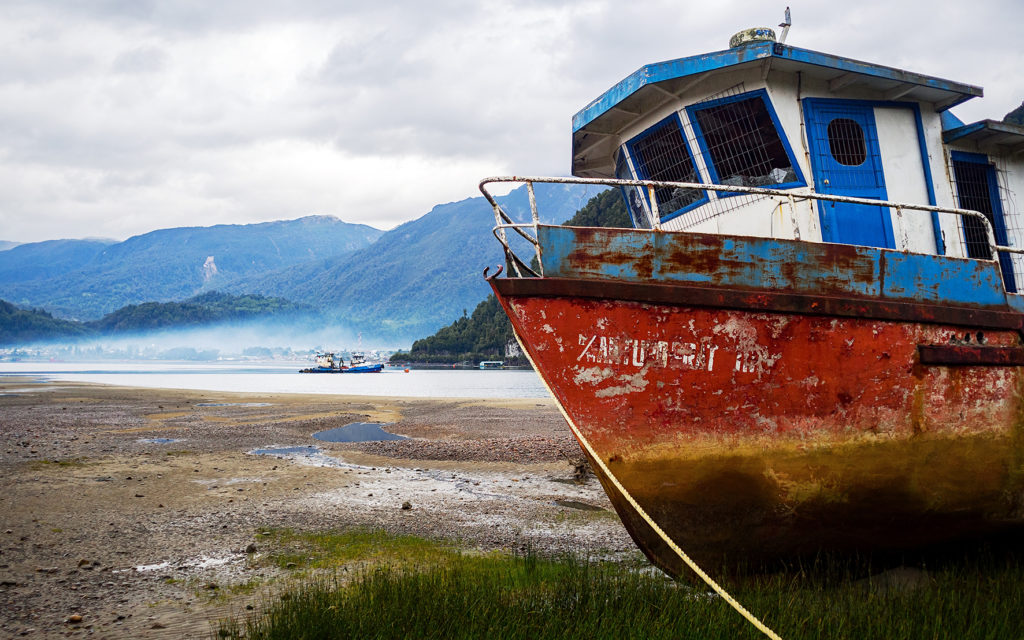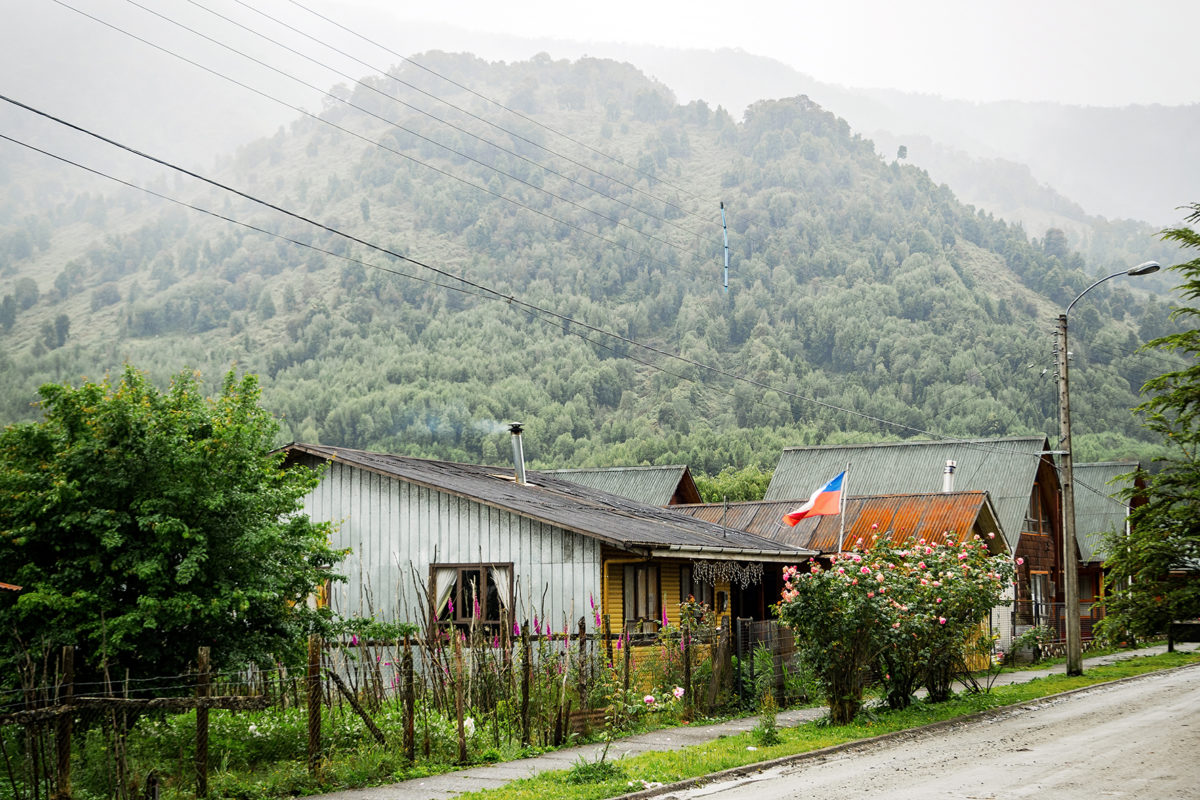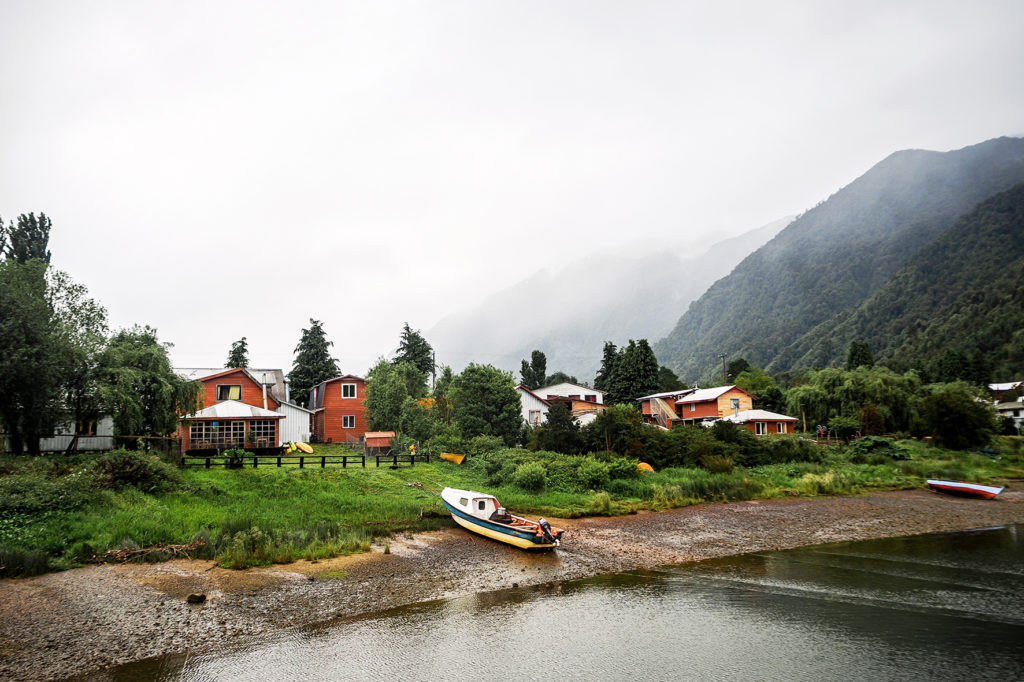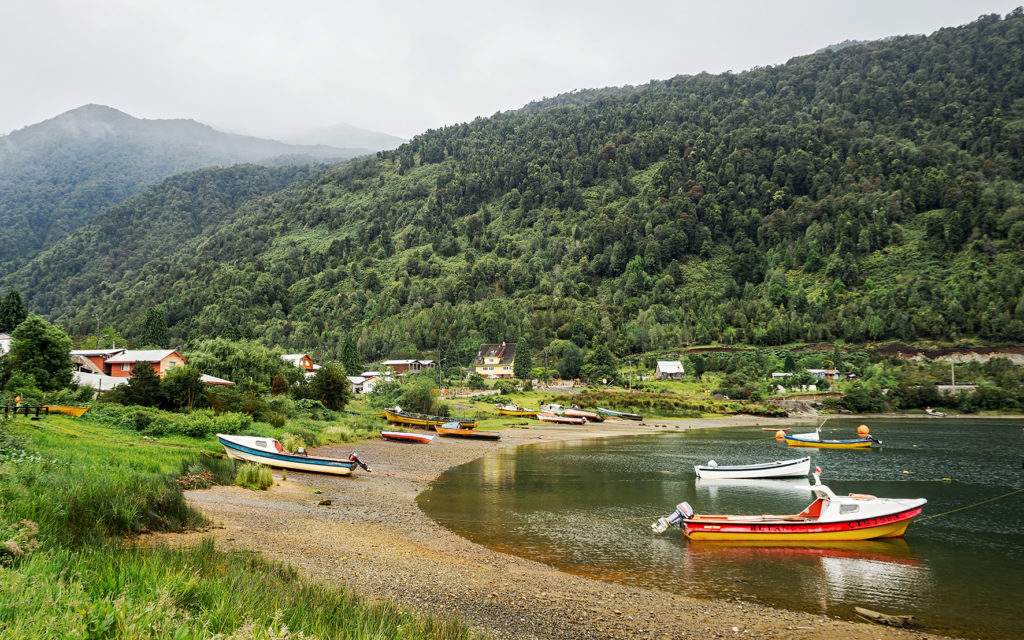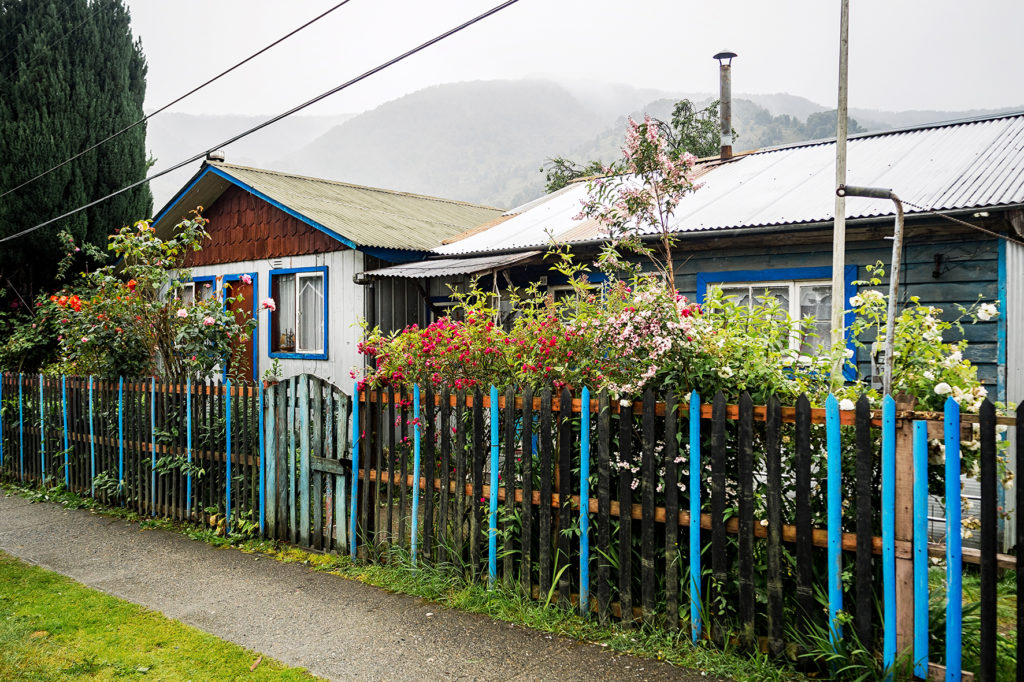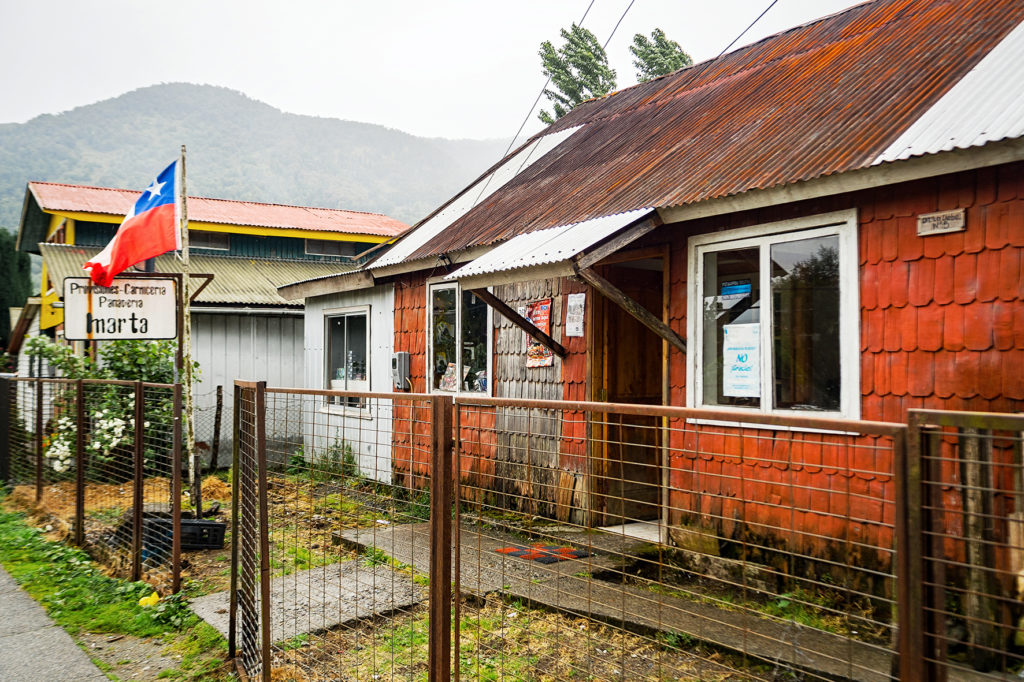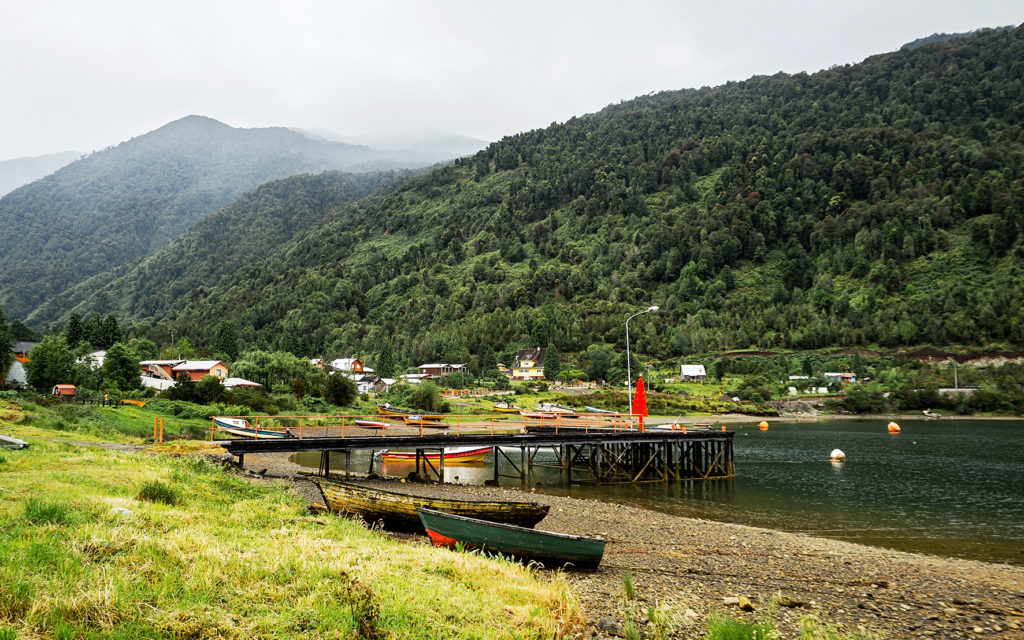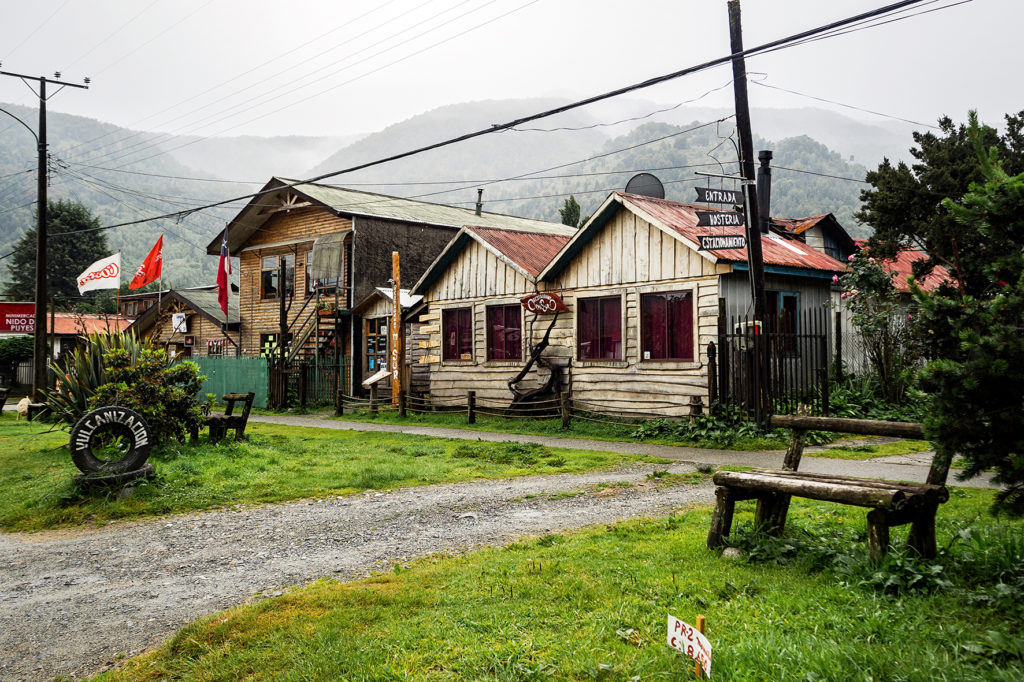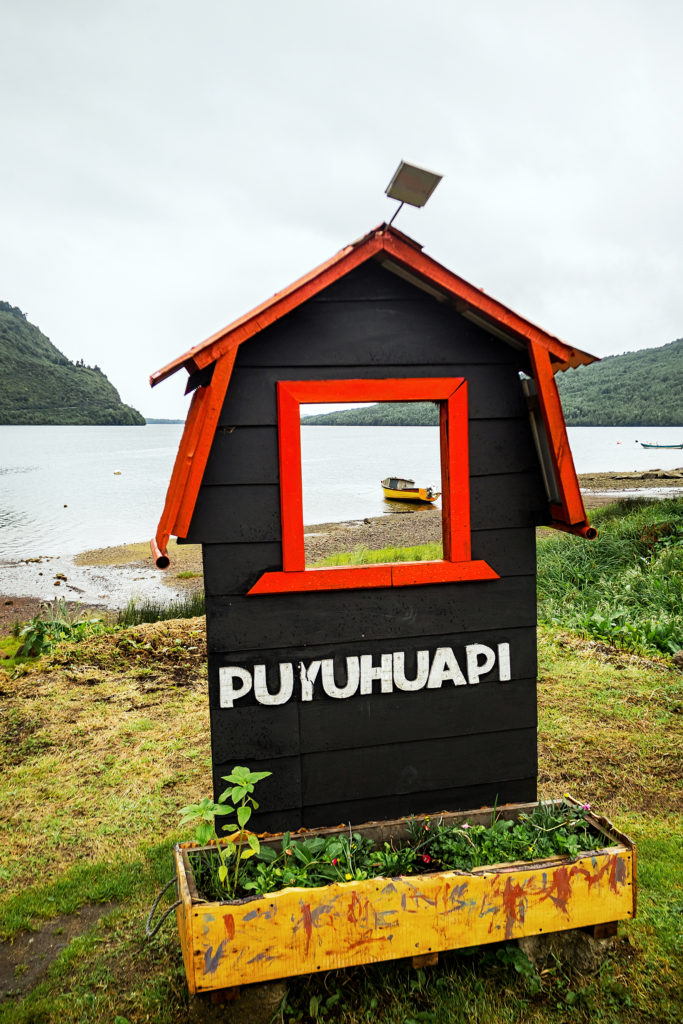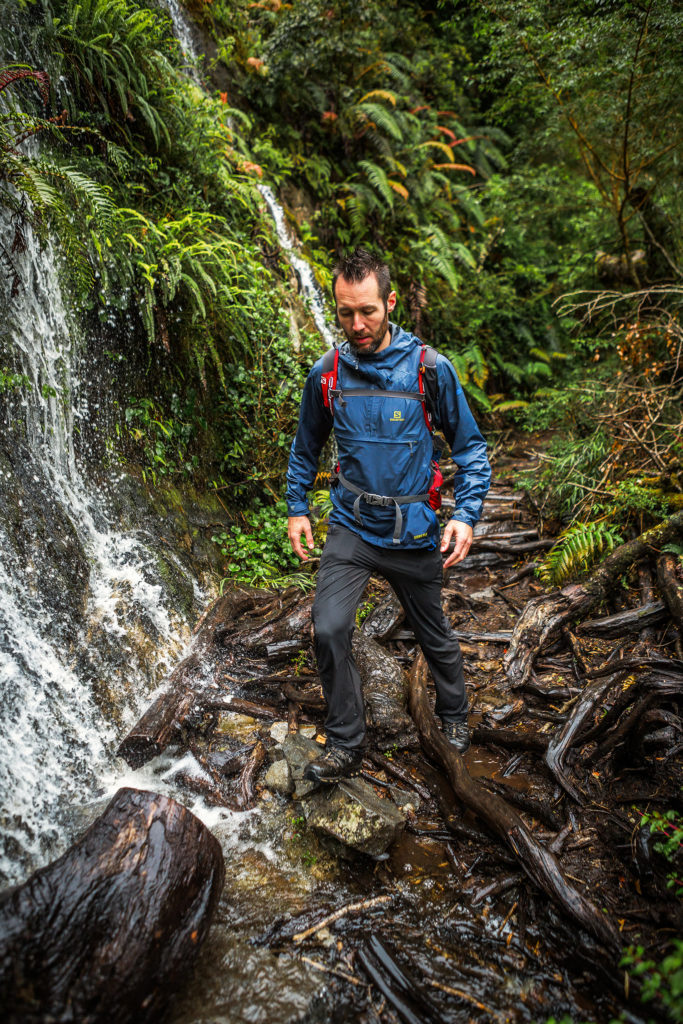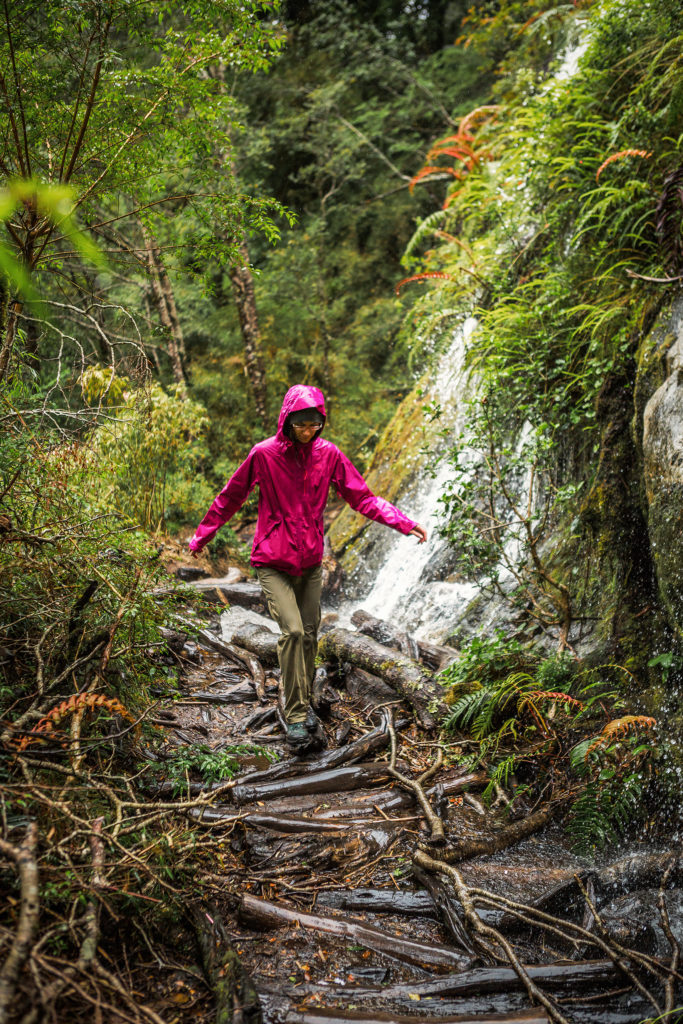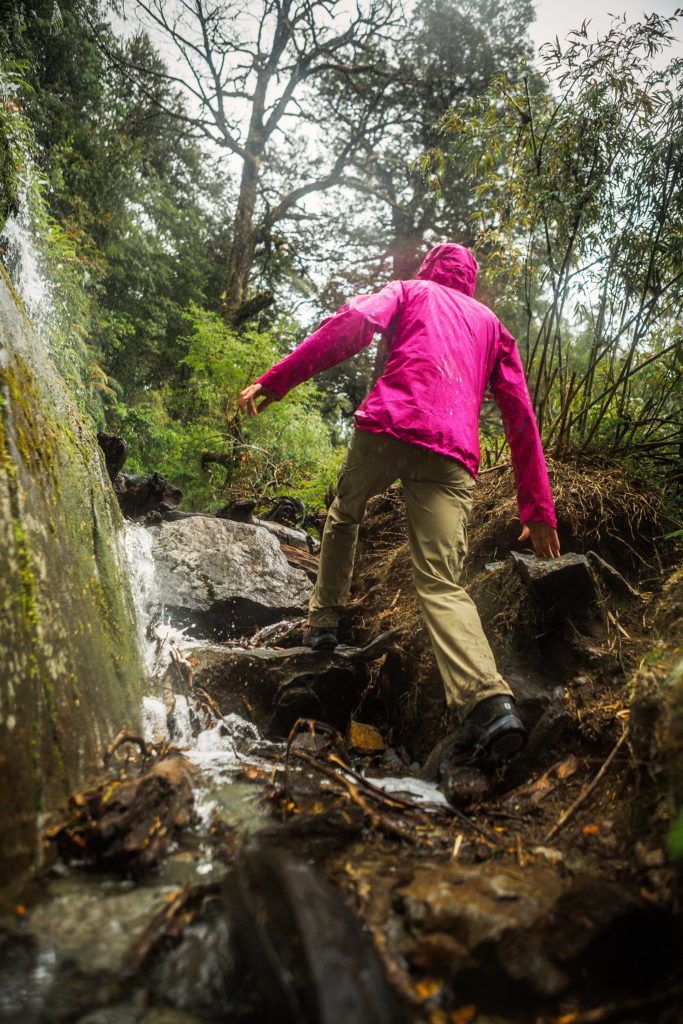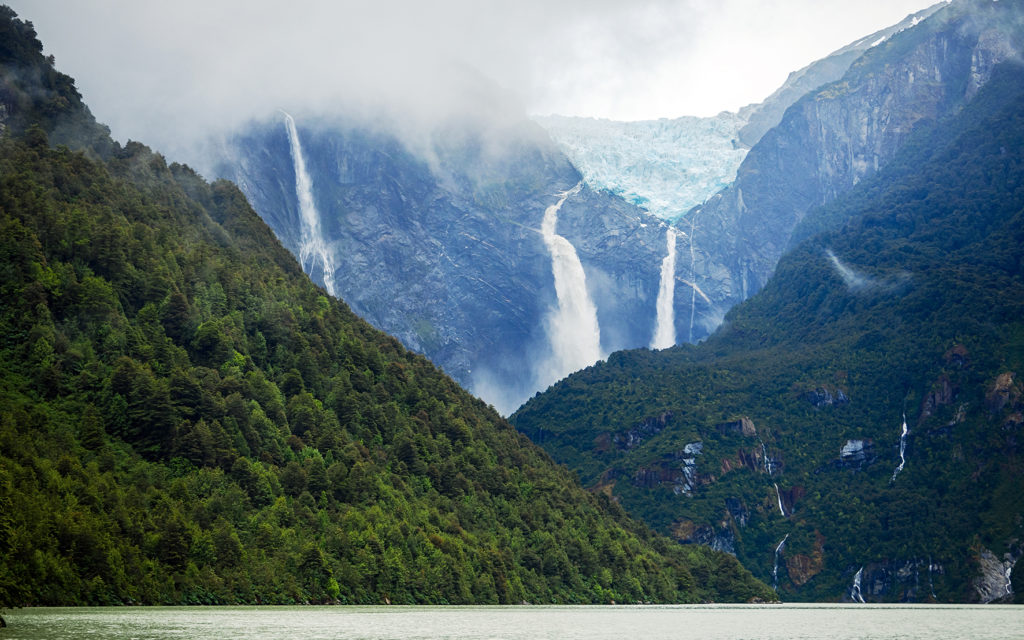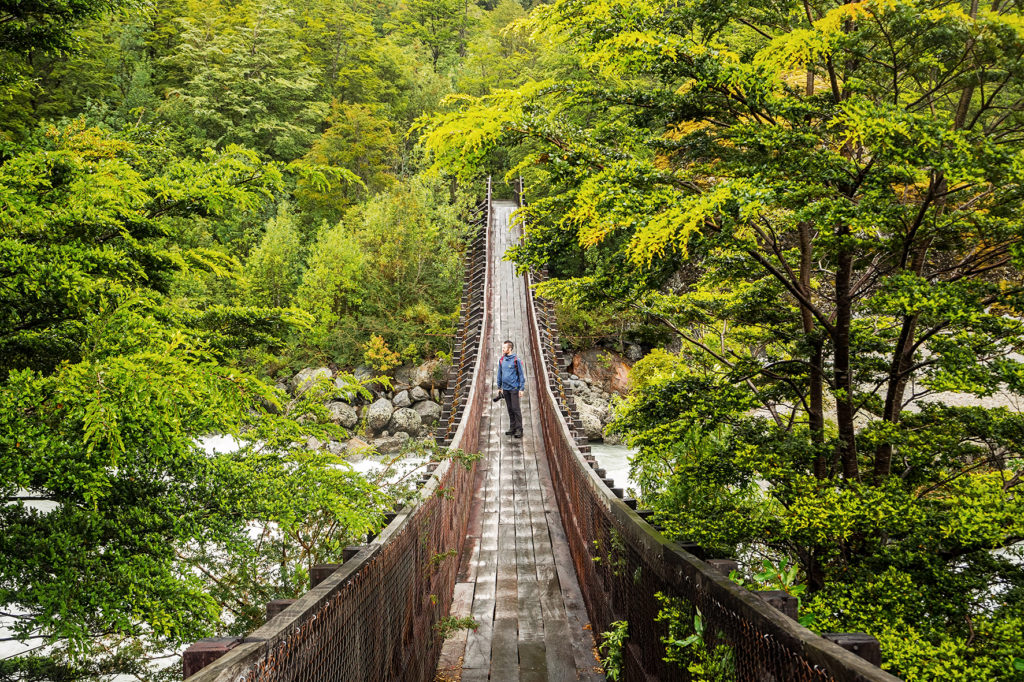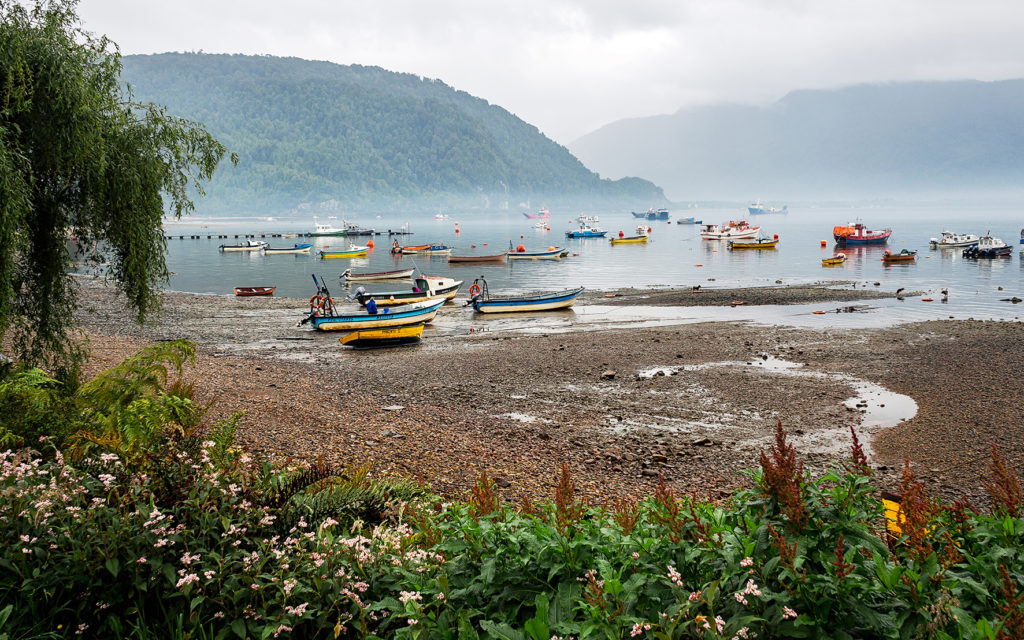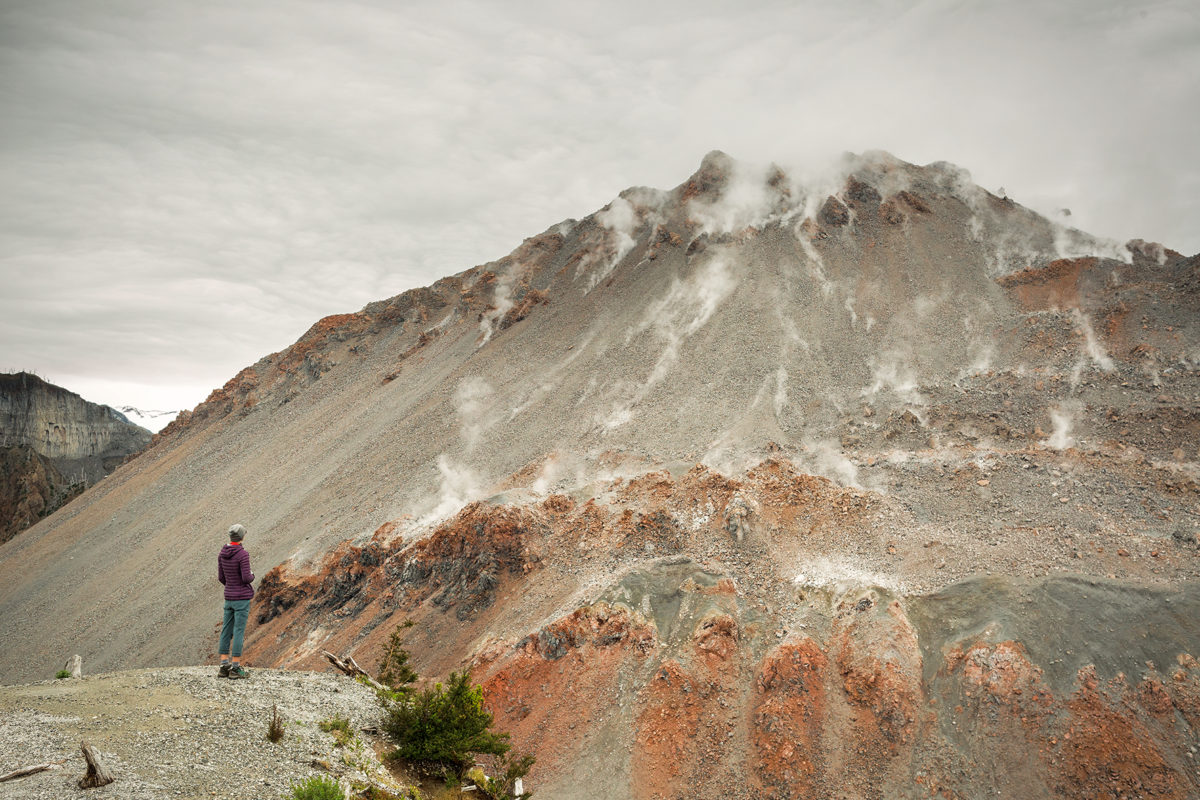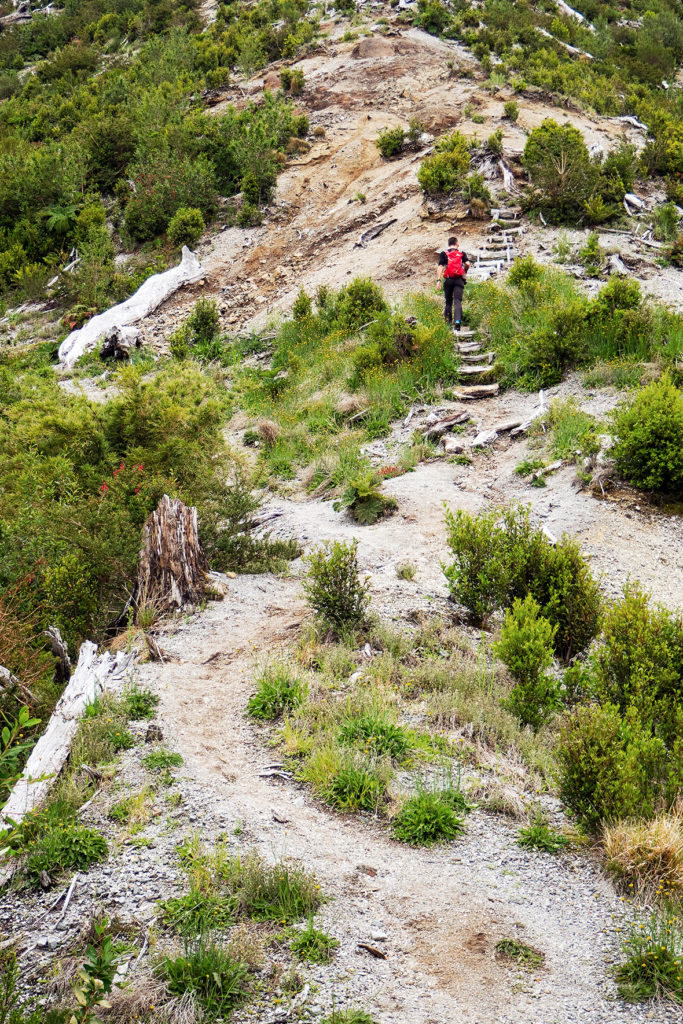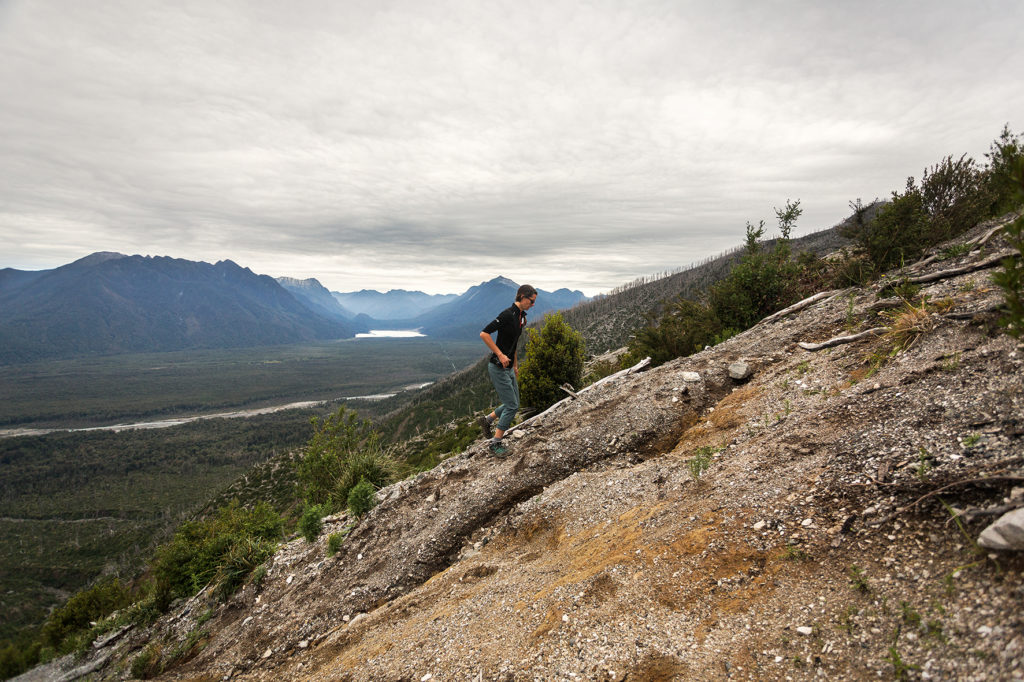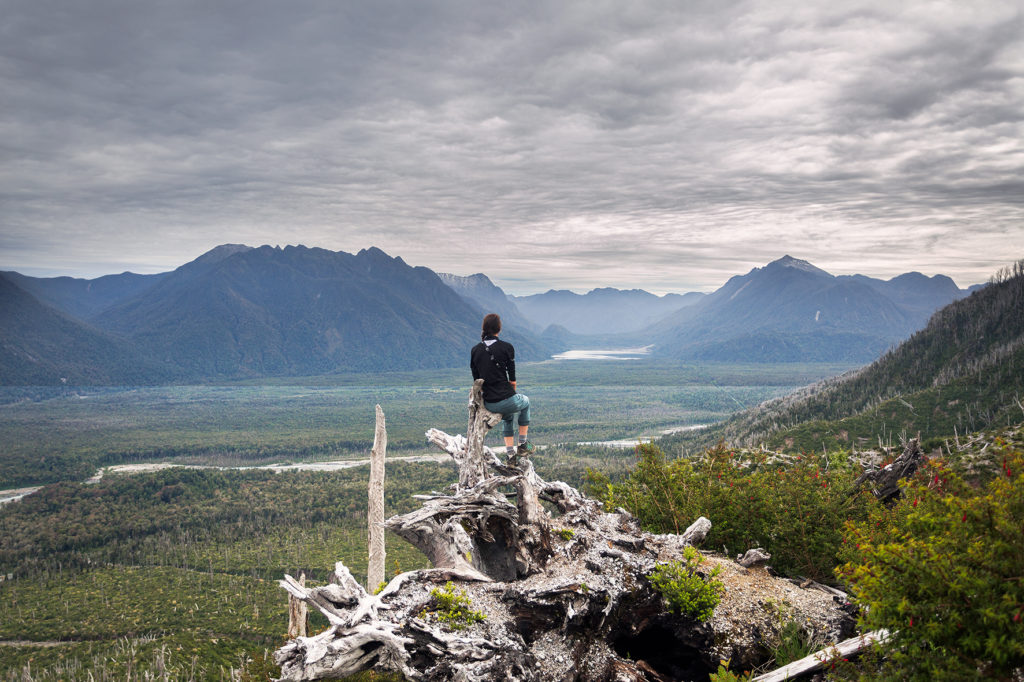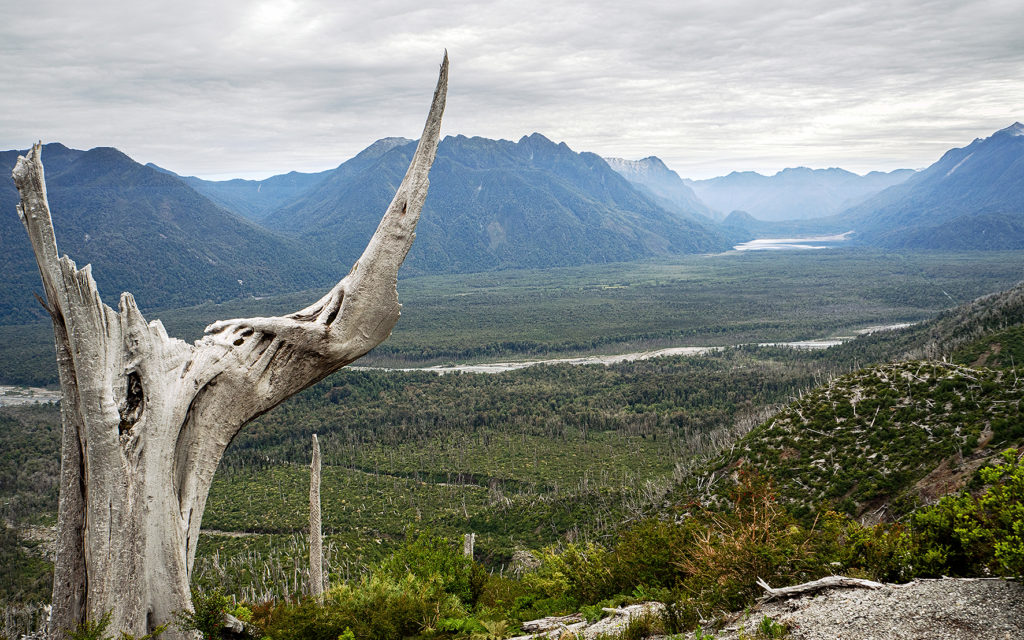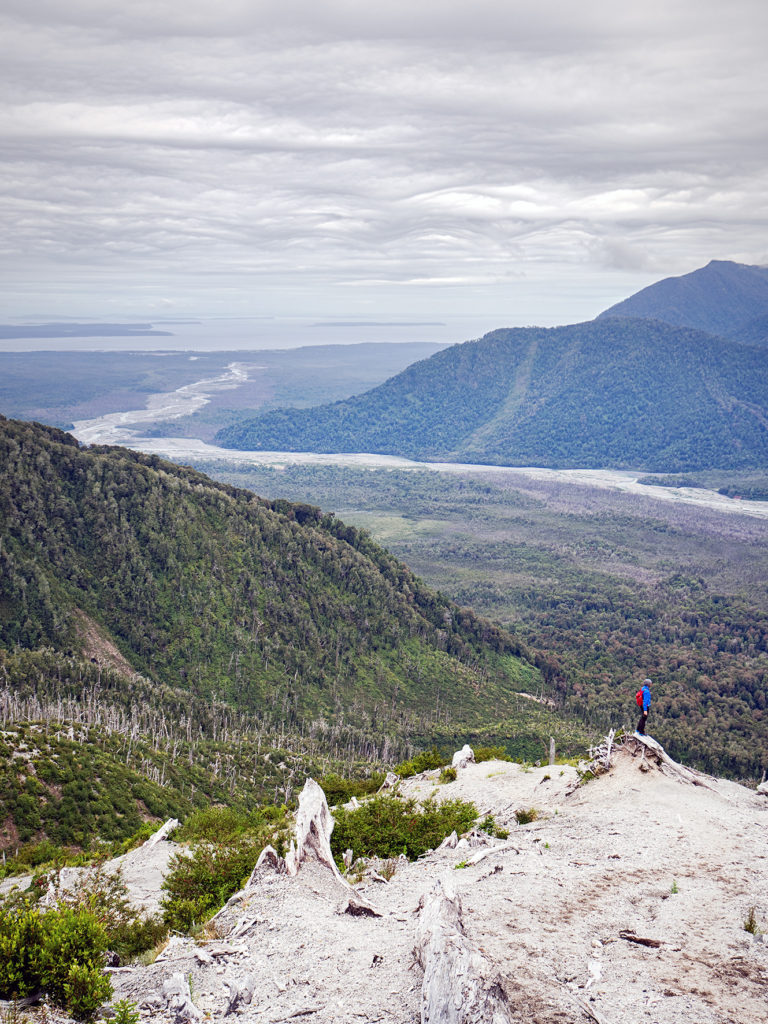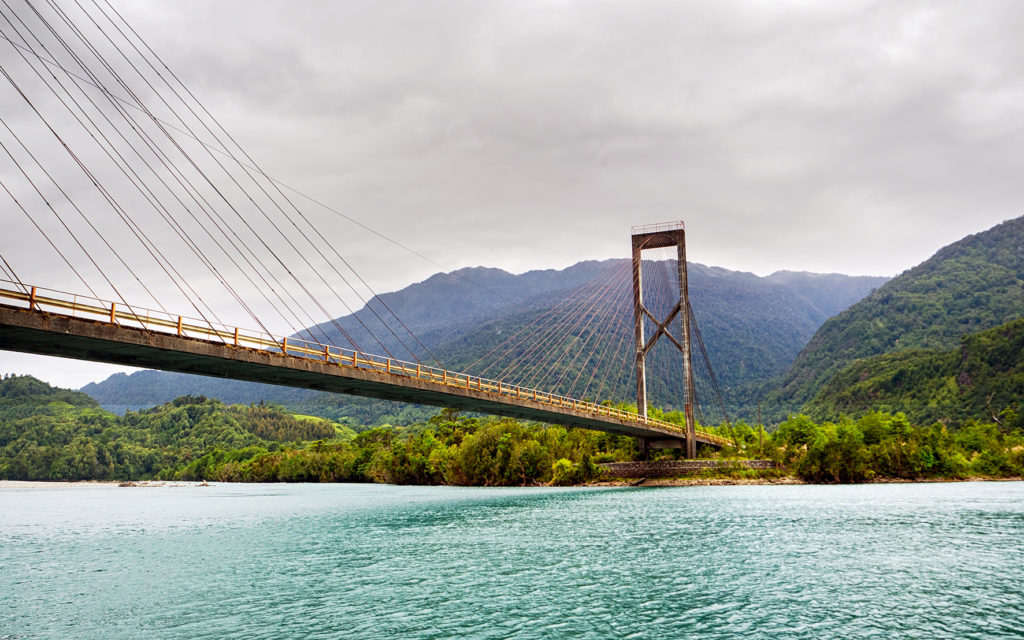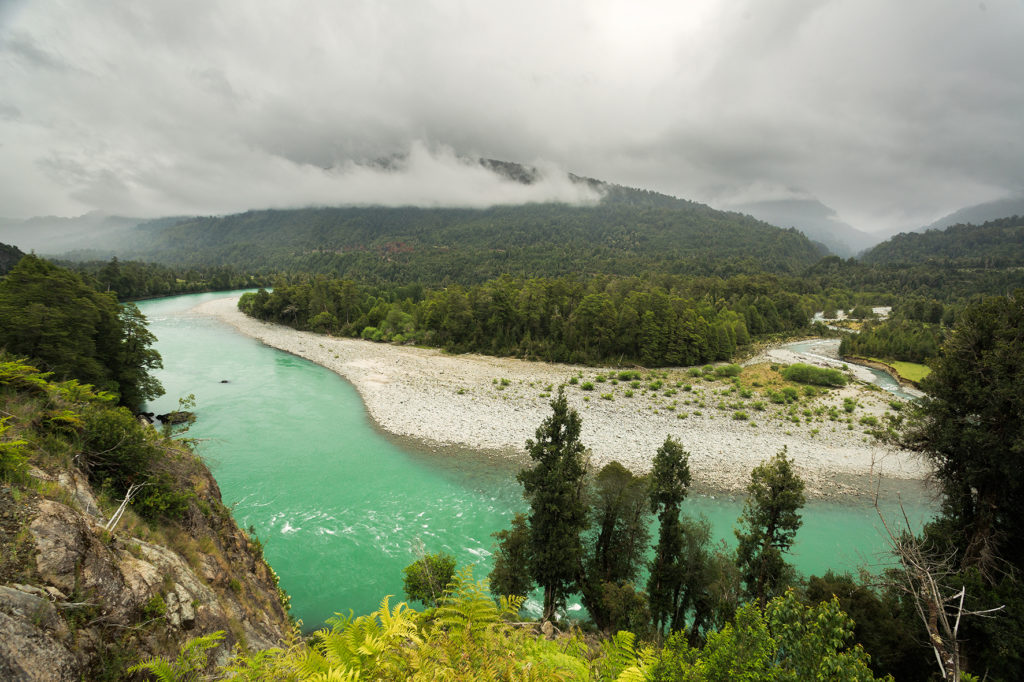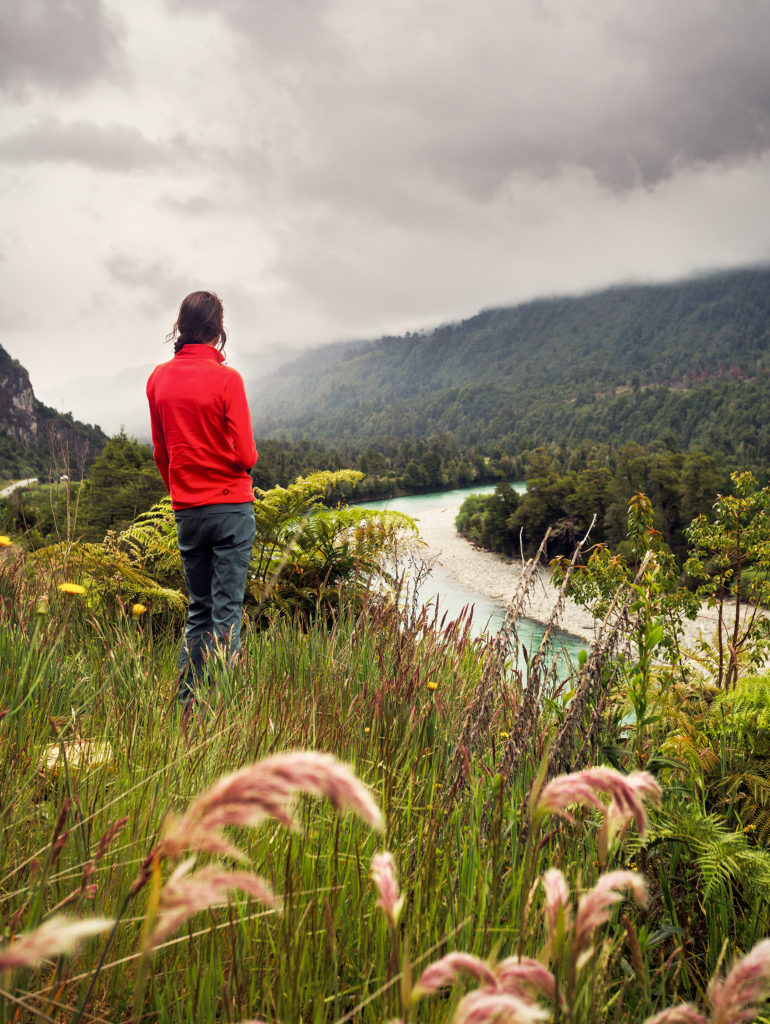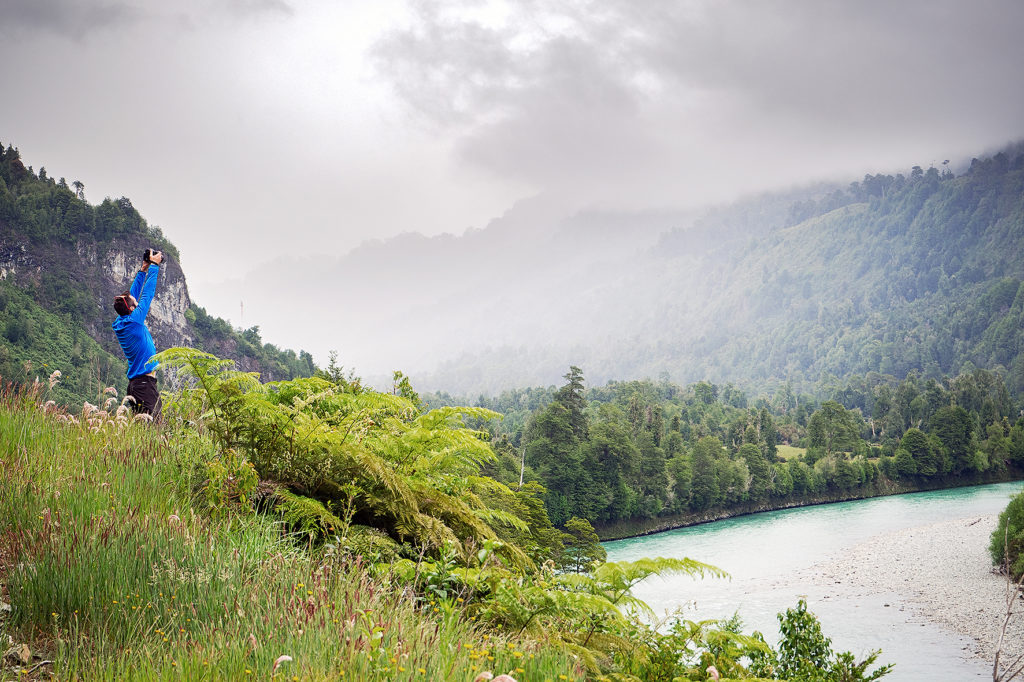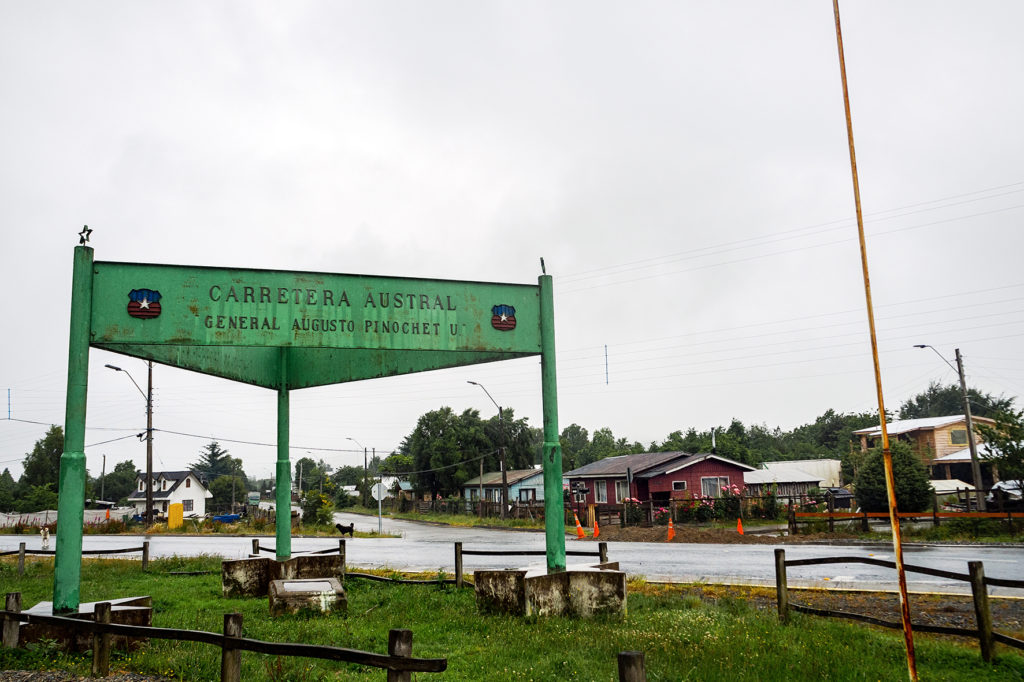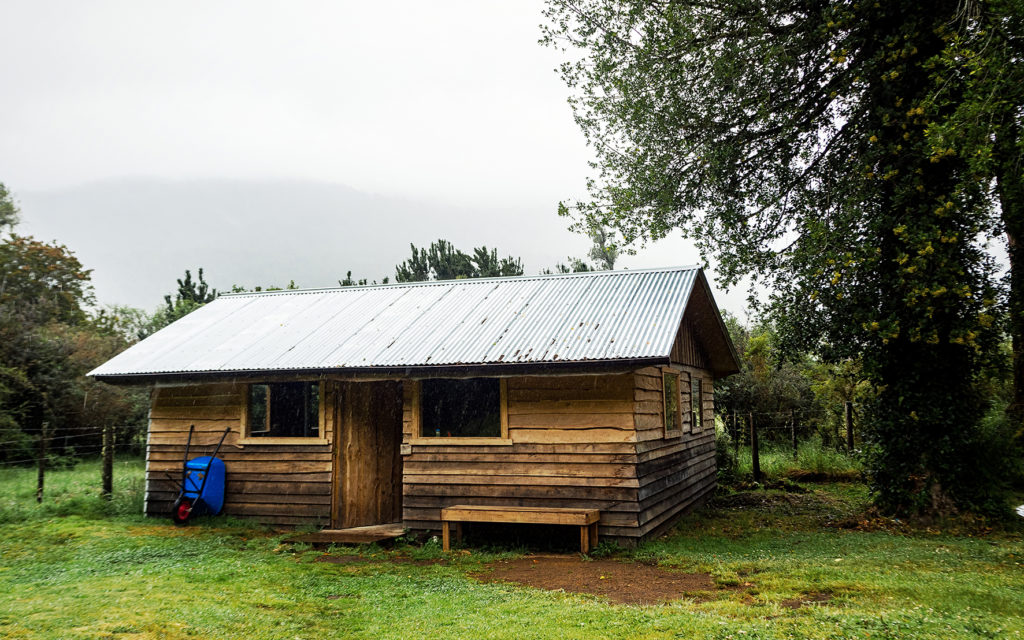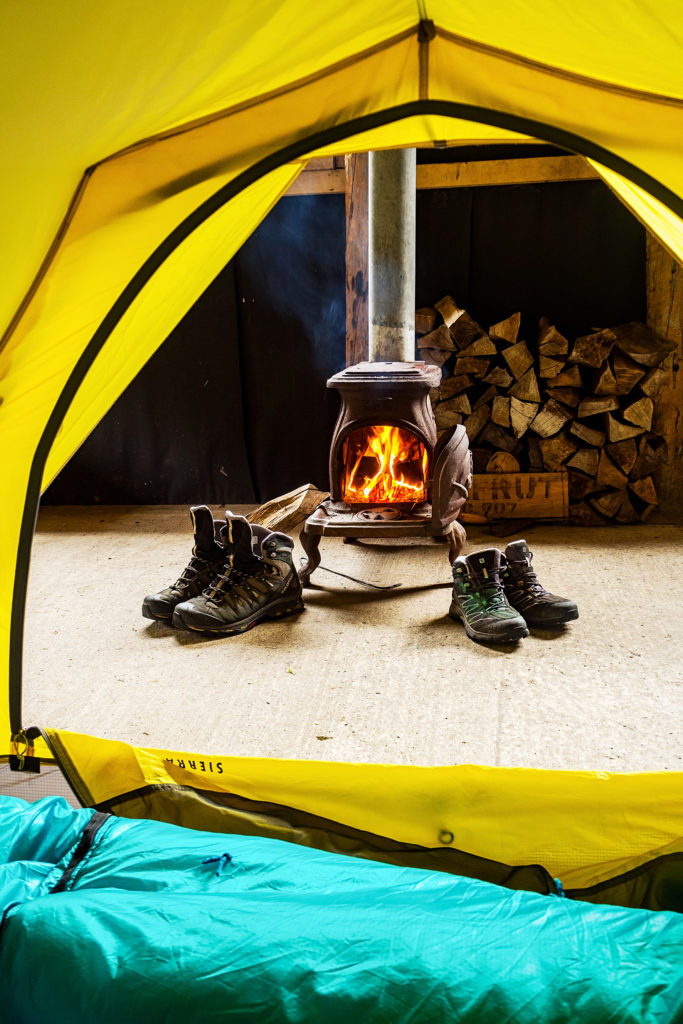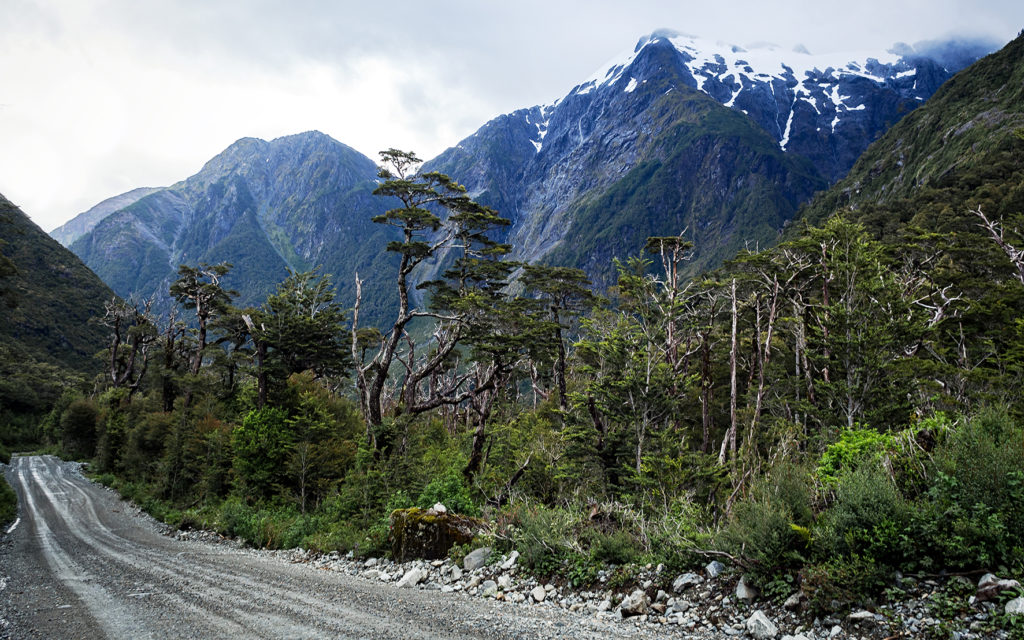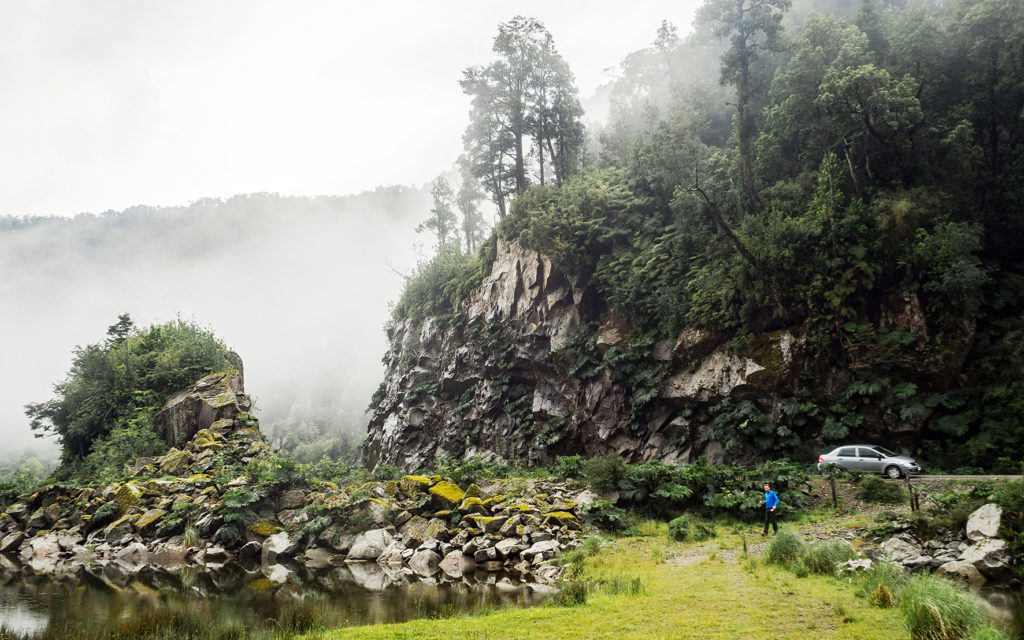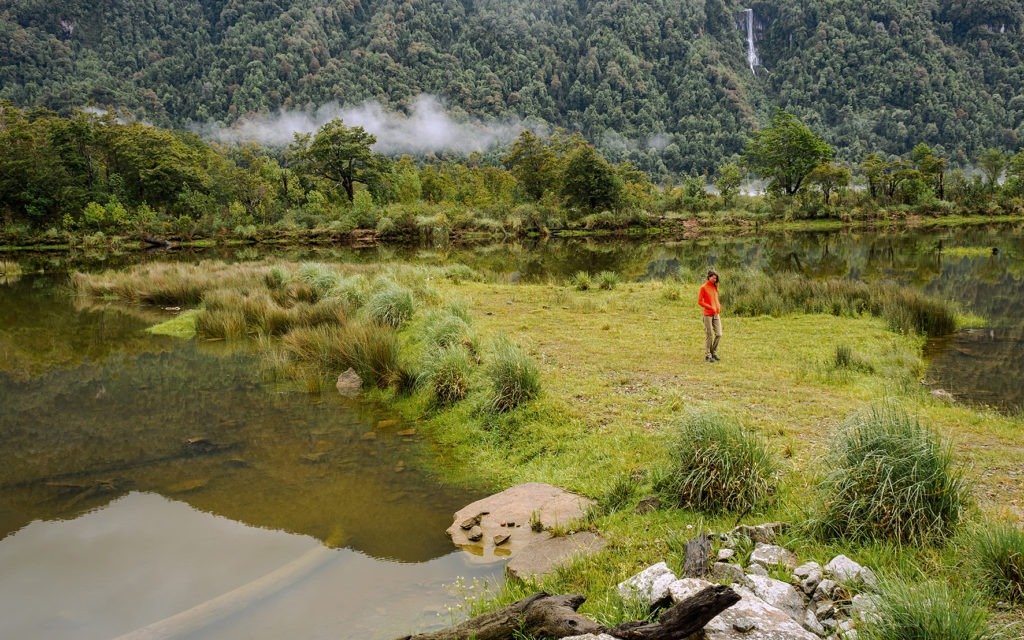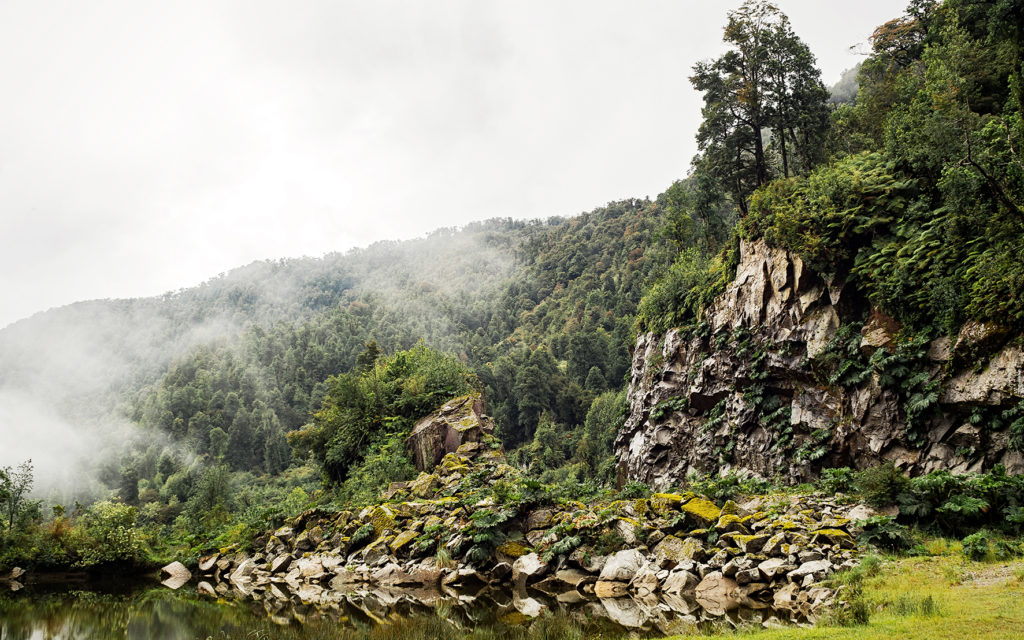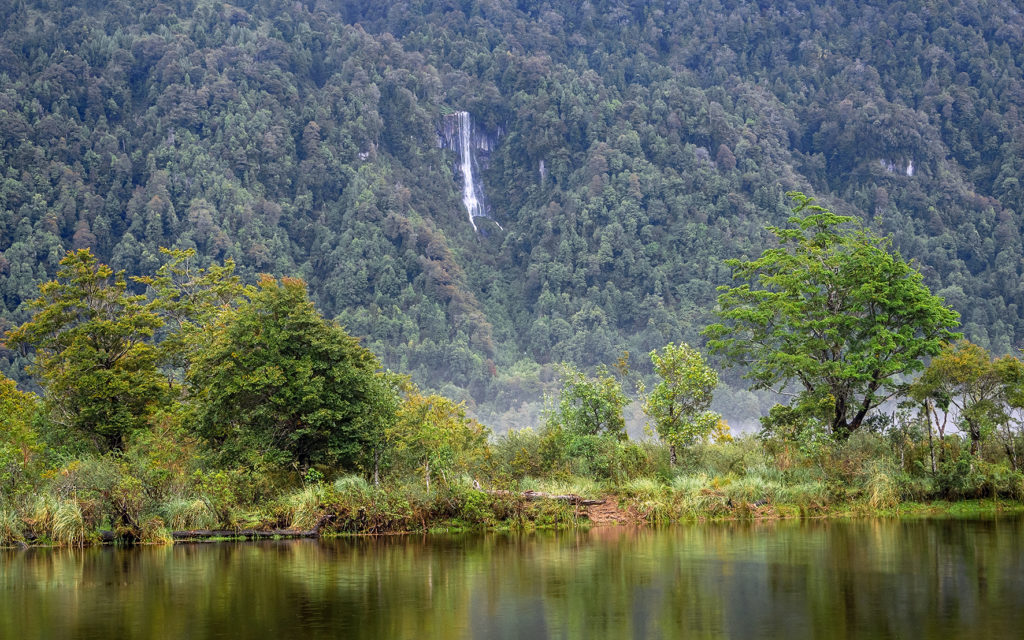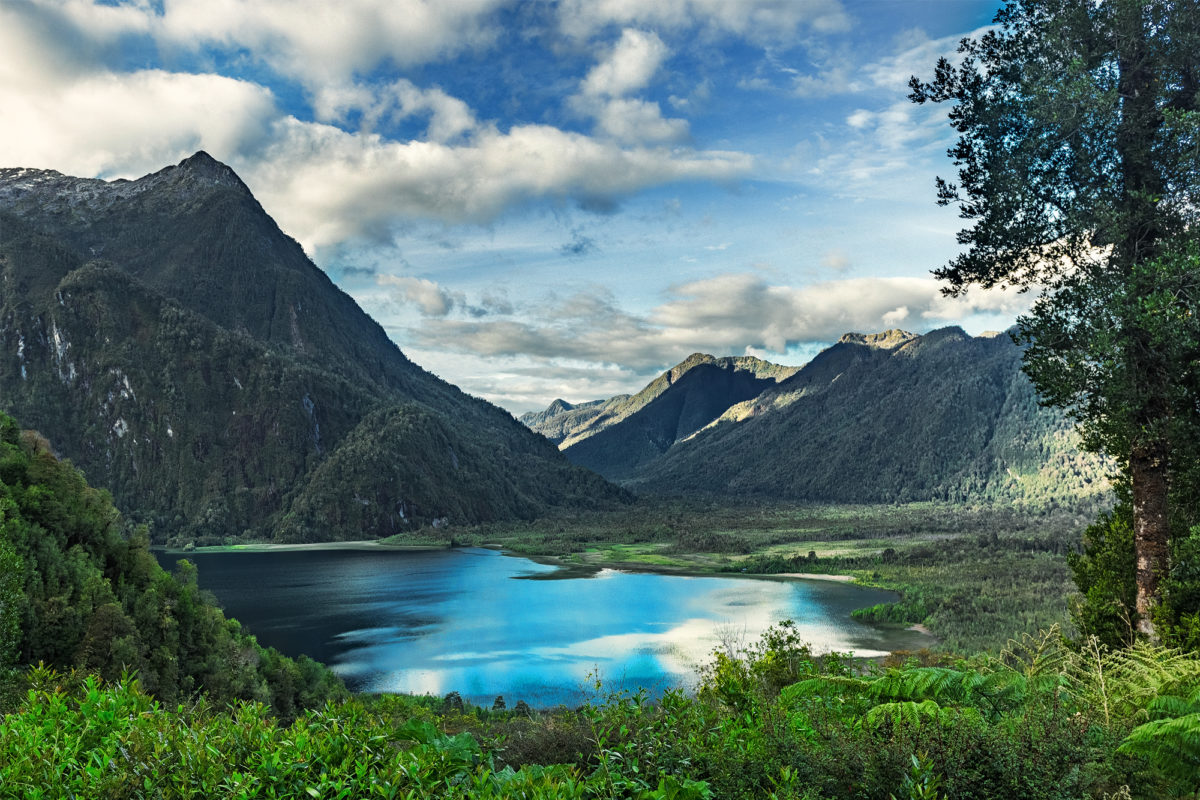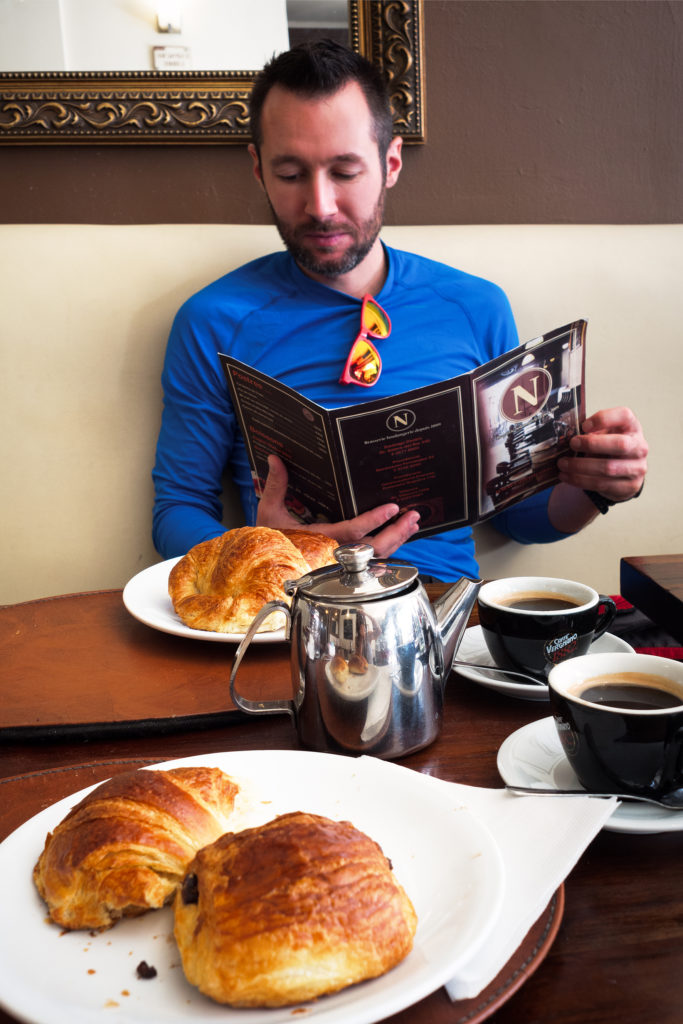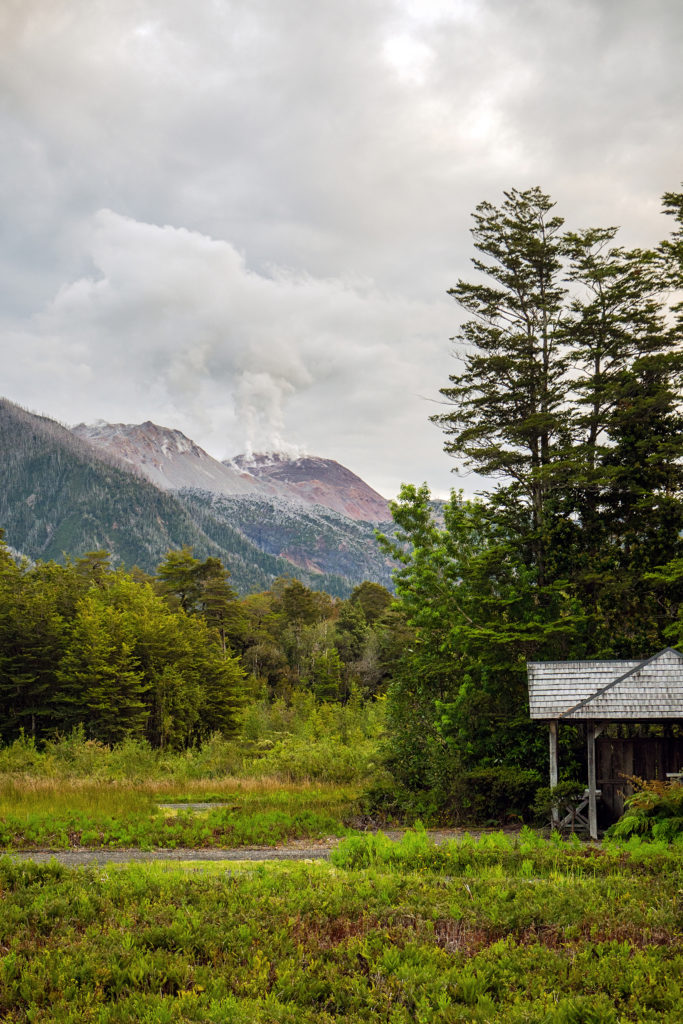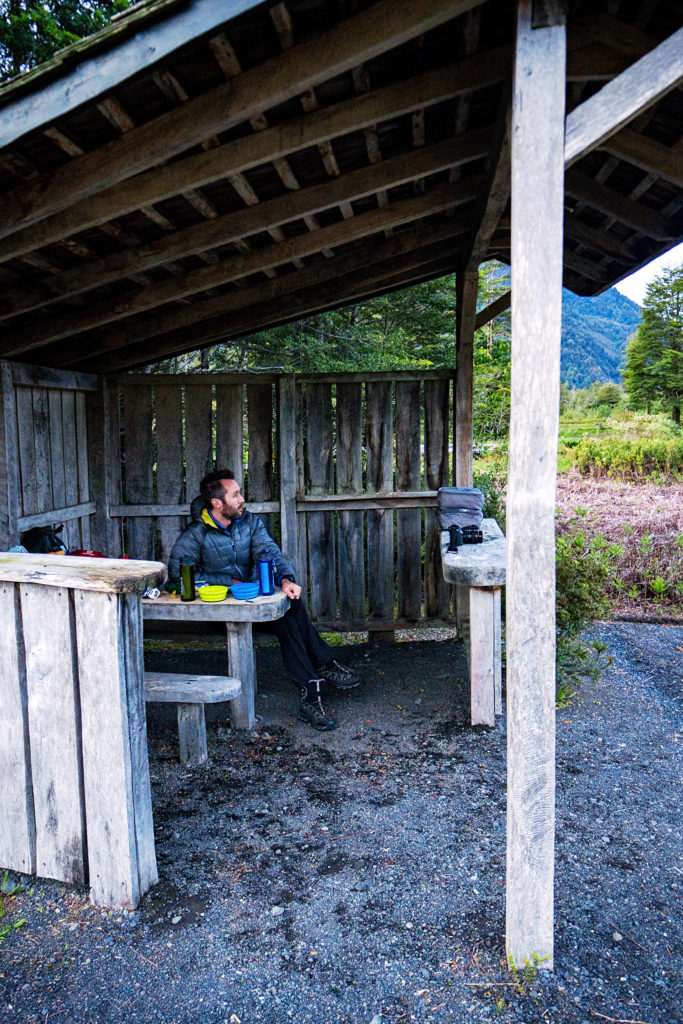Every few years, Brice and I take a big trip to a place we’ve never been. The latest dated back to 2014, when we had gone to New Zealand and Australia for 5 weeks.
So in 2016, we decided it was time for another epic trip. The project I was working on was finishing in November, so we figured December would be the perfect month to go away. When thinking about destinations, Brice suggested Patagonia almost right away, and I thought it was a great idea.
Our month away actually started with a week in Costa Rica, for a Run Like a Girl retreat – but more on that later.
Arriving in a foreign country, where you barely speak the language, the first challenge is always to figure out how to get from the airport to our accommodation. We would normally look for bus or shuttle options, but when we landed in Santiago, Chile at midnight on December 12th, we decided to go for a taxi instead.
The “official” airport taxis where asking USD30 to take us to our AirBnB downtown address. Brice decided to try negociating with some of the “less official” cabbies that were hanging around the airport, offering their services. One guy agreed to take us to our destination for $20 so we followed him up the stairs to another floor of the airport, and outside – apparently the reason they agree to cheaper rates is that they are not paying the parking fee for the main exit of the airport, where the official cabs are…hence why he took us to a different floor. Anyways, nowadays with smart phones and navigation apps, it’s pretty easy to follow your route and make sure the driver isn’t taking you some weird roundabout way to charge you more. And 15 minutes later we were standing outside a 30-story building in a little side street of Santiago.
Our host Claudio had graciously waited for us to arrive, even though it was close to 1am. After showing us our room in his small but comfortable 2-bedroom apartment, he offered us a cup of tea before wishing us good night.
Santiago was only a short stop in our Chilean trip. The next day we had booked a bus ticket at 7pm, to travel overnight some 1000km south to Puerto Montt, where we would begin our Patagonia road trip. Claudio was very accommodating and we were able to leave our bags in the apartment until we had to leave for the bus station, which meant we didn’t have to lug our packs around all day in Santiago.

With a population of 5.1 million people, Santiago was the biggest city we had been in in quite a while. Indeed, it definitely felt like a “big city”, without feeling crowded as we were there on a Monday, during most people’s working hours. We had breakfast in a very “Parisian” feeling café on a busy pedestrian street, then wandered around the city for a while. The city had a very European feel, with buildings much older than what we’ve now gotten used to in Vancouver.


Before we got on the bus that day, we had to buy groceries as well as get some Chilean currencies. I wanted to make sure we would have food for the bus trip and the next few couple of days. We had booked a ferry crossing just south of Puerto Montt and based on traveling times, we didn’t have a huge amount of time between getting the rental car and arriving at the ferry terminal. So I didn’t want to have to worry about food at that point. Plus, we figured being the capital, Santiago would be the best place to get a variety of ingredients for camping meals. Same with Chilean currency, as I’d read that not a lot of places along the Carretera Austral had credit card machines. In both cases it just made sense to get those things sorted while we had the time for it in Santiago.
After accomplishing these two tasks, we headed back to the apartment for a late lunch and to chill a bit before our bus trip. This time, rather than get a taxi, I looked up transportation options and saw that we were only a few subway stops away from the bus station, so we took a subway ride.

We had booked our bus trip with TurBus (other companies offer the same trip, but they had the most convenient starting time option for us). With buses being the main mean of long distance transportation in Chile, they’ve really developed a convenient network and comfortable fleet. The buses offer three options (although not all available on the same vehicle). Salon, Semi Cama or Cama. The first one being a regular bus seat, and the last one a complete reclining bed option. We went for the middle one, Semi Cama, which was a seat reclining to about 150 degrees, so fairly comfortable to sleep in. Blankets and pillows were provided and there was an on-board bathroom as well.

The journey lasted about 14 hours, and with the aid of earplugs and a night mask, we slept relatively comfortably through most of it. The next morning, we arrived in Puerto Montt at 9am, ready to start the road trip portion of our Patagonia adventure.
We had arranged to rent a car from Puerto Montt to Puerto Natales, where we would drop it off before starting our 6-day hiking track through Torres del Paine. Finding a car to rent one way for a 2500 km road trip turned out be a bit tricky, but we eventually managed to find one at a somewhat reasonable price. I’m planning on writing a post describing a bit more of the logistics behind planning this trip, and I’ll be sure to include details about the car rental aspect. But for now, to make a long story short(er), I’ll skip the episode about how a brand new Nissan Tilda came to be ours for 12 days.
The only way to drive south on the Carreterra Austral from Puerto Montt is to cross a succession of fjords. It involves 3 consecutive ferry rides, but only the longest one in Hornopriren (3.5 hours) can be booked online. During my pretty extensive research for this trip, I had read about those ferry crossing on the northern part of the Carretera, and how busy they can get, creating a bottle-neck even for locals needing to go back and forth. I had even read about people having to wait a day or two because of the number of vehicles trying to cross. So to cover our back, I had actually booked 2 crossings. Since we would be arriving in Puerto Montt on the morning on December 13th, I had booked the 3pm crossing that day, as well as the 10:30am on the following day. We were arriving all the way from Santiago after all, and the the ferry was about 2,5 hour drive from Puerto Montt. That way, if for whatever reason we didn’t make it on time on the 13th, we had a guaranteed spot (as much as things can be guaranteed in Chile) for the following day. It might seem a bit over-kill, but the short-ish time we had for this road trip meant I really didn’t want to waste time stuck between two ferries, and having to make up that time by driving longer days later.
We got the car a couple hours later than planned, so it was getting close to 12pm by the time we left Puerto Montt. The ferry reservation mentioned you had to be at the loading area 2 hours prior, which seemed a bit strange if you have a reservation. We definitely weren’t going to make it by 1pm, but we could still try to be there before 3pm so on we went. I should also mention that there was another short ferry crossing between this one on the one we’d booked. That one didn’t require reservation and was running every 45 minutes.
The road between Puerto Montt and Hornopiren was really scenic, most of it right on the ocean, with lots colorful fishing boats punctuating the beaches.

The first, very short, ferry crossing was between La Arena and Puelche. We arrived just after 12:30 and got on the 1pm ferry. After the 1/2 hour crossing, we continued driving towards Hornopiren. Somehow – thanks to Brice’s swift driving – we made it to the loading dock at 2:40pm, with 20 minutes to spare… There were 3 other cars waiting to get on… so not quite the line-up I was worried about. As we realized later, December is still somewhat shoulder season, which played in our favor in a lot of occasions throughout the trip, including this one.

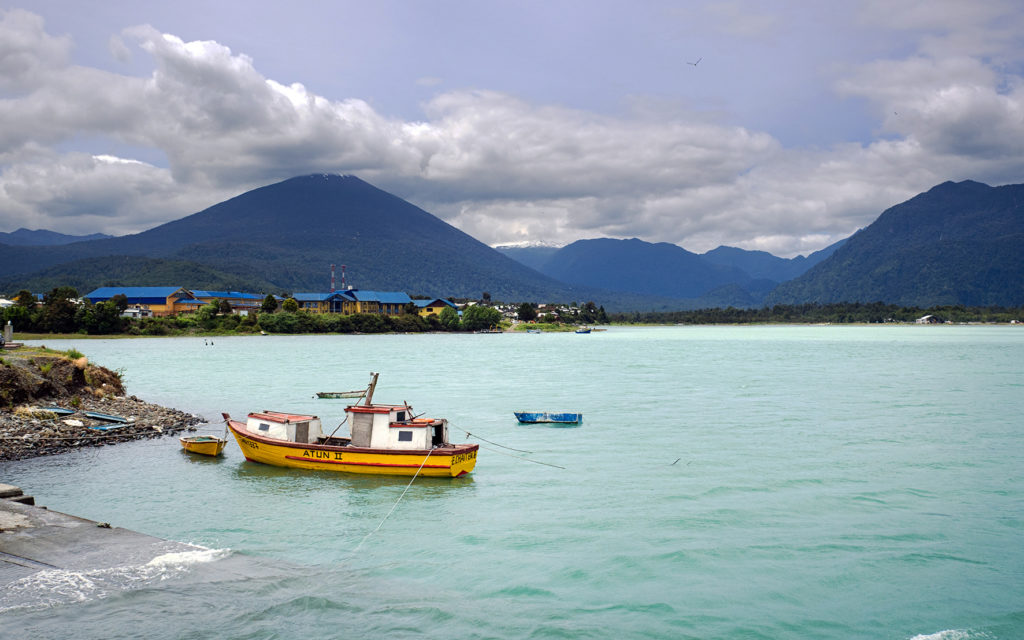
I walked into the small office and handed them the reservation confirmation paper, in exchange for our boarding tickets. And a couple of minutes later, we were on board, ready for a 3.5 hour traverse of the fjord.
We were pretty pleased with ourselves, having made it there on time. And if this first half-day in southern Chile had taught us anything, it was to not approach things here with our very Western-country habits of what services are usually like in North America. Down there, things went at a different pace, and within a much looser structure…

The ferry wasn’t very big, but the inside was pretty cozy: a large room filled with booths to relax in, and a small bar offering coffees and snacks. The landscapes we enjoyed while sailing across the fjord reminded us very much of ferry crossing in British Columbia, calm waters surrounded by blue hills, faded in the atmosphere.
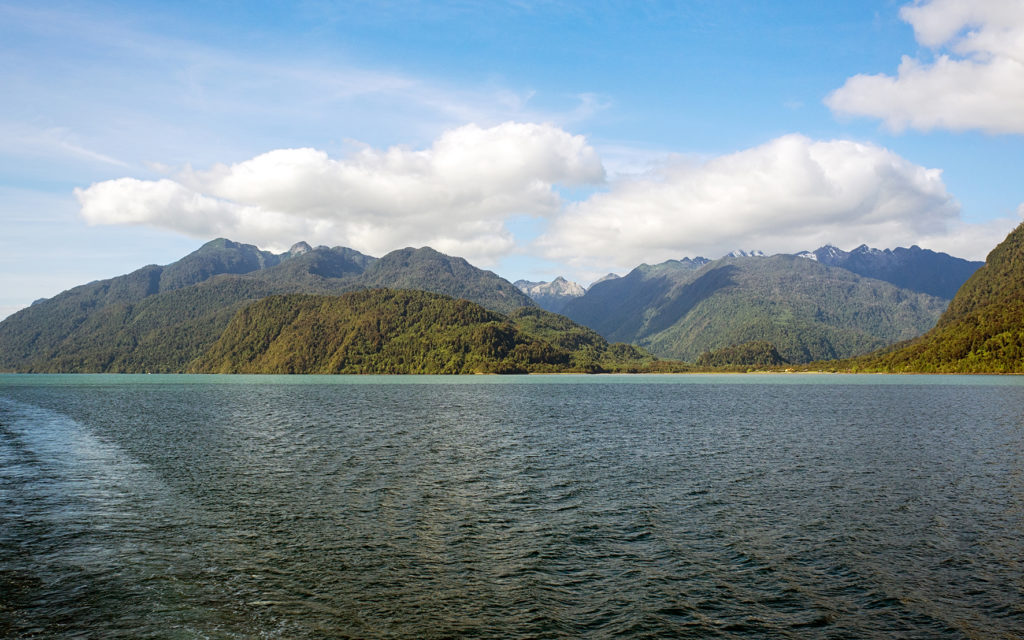
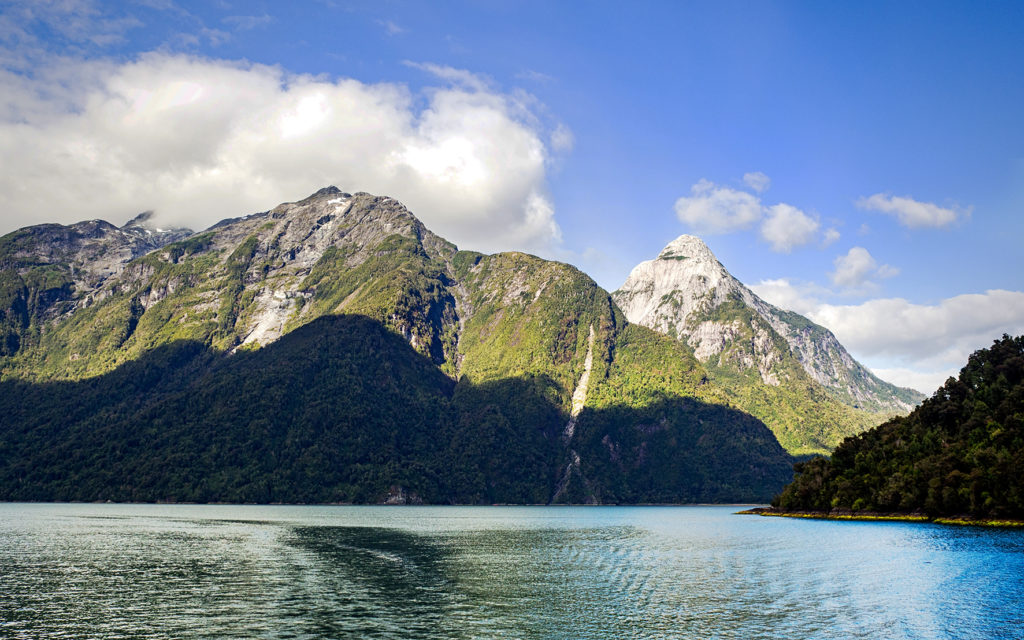
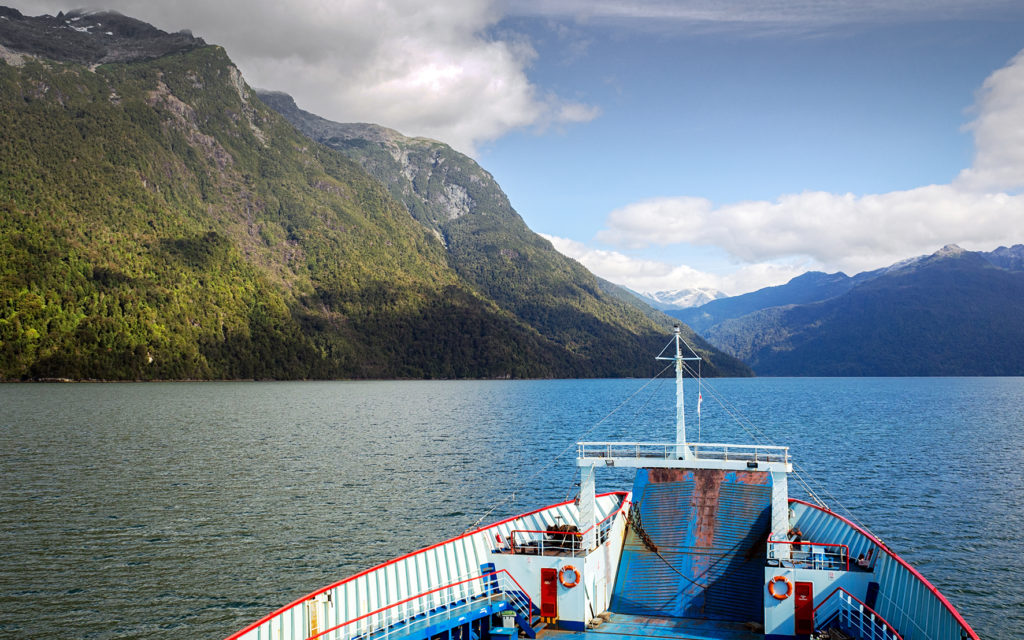
Before leaving Vancouver, I had really only planned the road trip as far as this particular ferry ride, but now that we were on it, I couldn’t help but take a closer look at the map. I had made a short list of places that were on the way, based on different blogs I’d read. We weren’t necessarily married to any of these suggestions, but they were a good place to start.

So, looking at both my list of “points of interest”, along with the very handy guidebook “Carreterra Austral, A Guide to one of the World’s most Scenic Road Trip”, I put some rough pins on the map of where we should try to be every night, in order to keep the driving to a manageable amount every day while still having some time to do some exploring.
After this long crossing, we had to drive about 15 minutes on a single track dirt road, lined by tall trees, to the third and final ferry. That one didn’t require booking either as it was technically considered part of the Hornopiren crossing. We had met a few hitch-hikers from Israel on the first boat and since they didn’t have any other way to get to the second part of the crossing, they hopped in the car with us. The final crossing was only about 45 minutes.
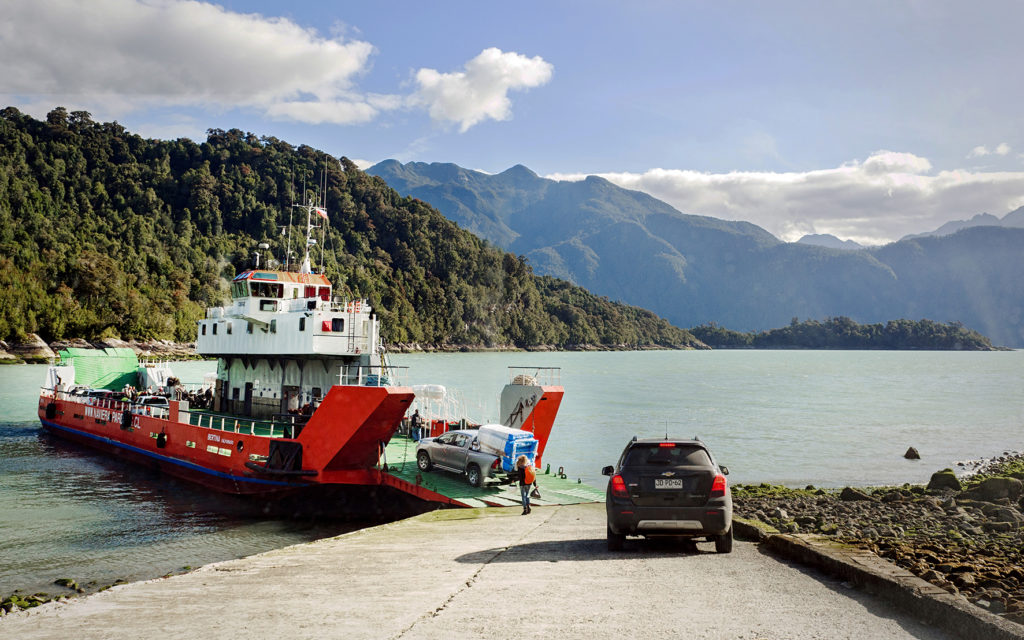
On the other side, we landed at the entrance of the Pumalín National Park. There were 6 campgrounds dispersed in the park, within the next 25 km (between the ferry terminal and the nearest town of Chaiten). We drove to the very last one, El Volcano, and that’s where we spent our first night on the Carretera.

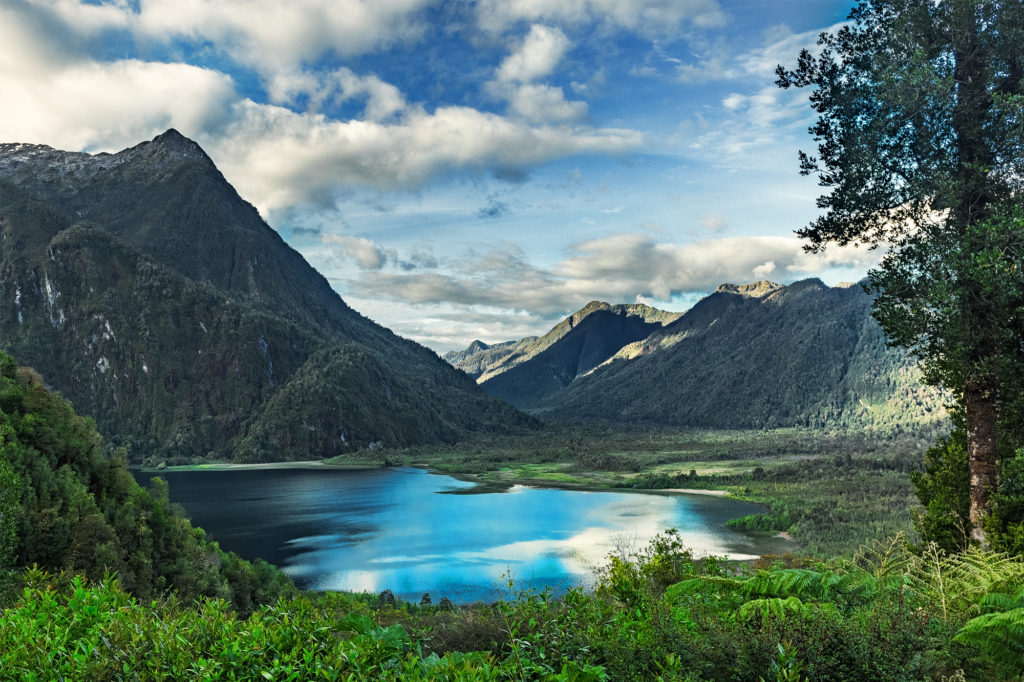
Two kilometers down a narrow gravel road in the middle of the dense forest, a vast clearing offered a good amount of camping spots, nicely spread out from each other. From the main ranger building, there was a one-way road with a little driveway branching out to each campsite.
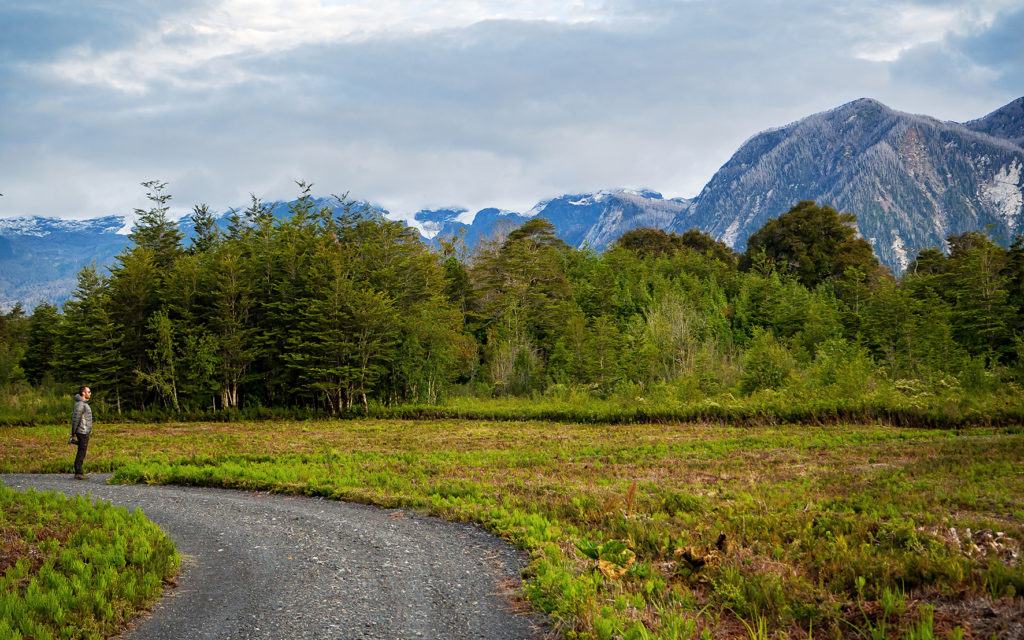
Each camping spot came with a small open hut sheltering a picnic table, a (cold) water tap as well as a patch of cushy grass to set up the tent. And thus we got our first experience of how well thought out campsites are in Chile.
The whole area was on pretty flat grounds with tree patches, which meant a pretty spectacular 360 view of mountains on one side, glaciers on the other, and of course, the volcano, with its steaming cone clearly visible in the distance. Pretty cool!
As we walked around we also noticed a long patch of really nicely maintained grass. Turns out it was a landing runway for small planes.


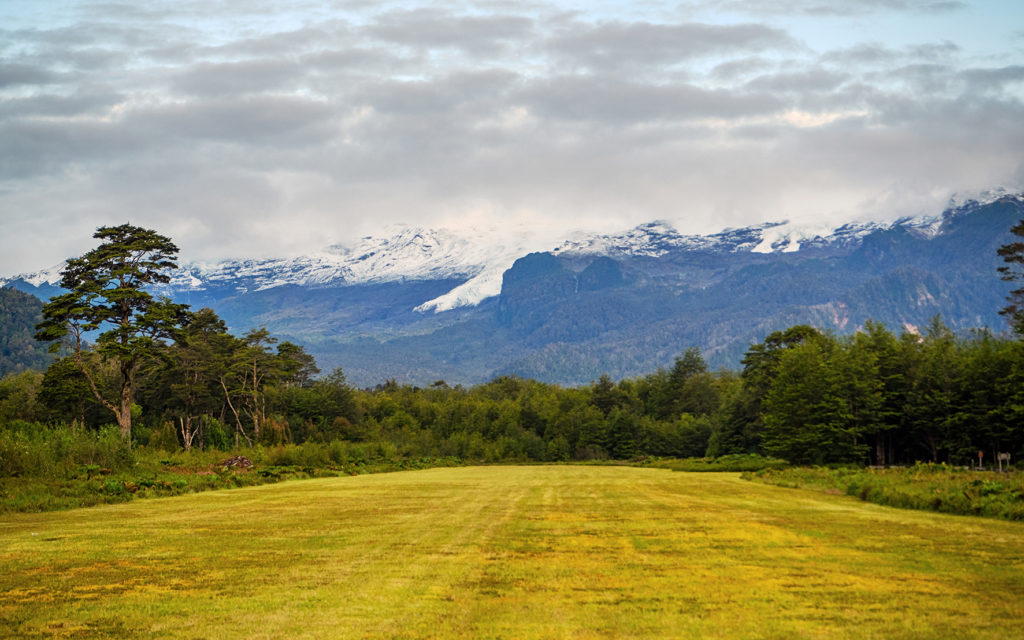
The campground office was actually closed (the official tourist season didn’t start until January), which meant that there were no rangers on site and we couldn’t buy anything from the small store, but we were still allowed to camp for free. (as an off duty ranger confirmed the next day)
We were pretty glad we’d had the foresight to buy a bit of food in Santiago, as we had no time to stop between Puerto Montt and the ferries, and there was no place to buy any food in the park, with all the stores being closed. The only thing we didn’t have was a bottle of propane for our tiny camping stove, but we managed to make a meal out of left over lunch ham, avocado and bread.
We slept under a clear sky and bright full moon, which made me think for a moment that the sun hadn’t set at all (it of course did, shortly after 10pm, a nice change from the 4:30pm sunsets we had experienced at Chakra Lodge in Costa Rica.)
The night was pretty cold, a good chance to put our home-made sleeping quilt to the test – and a successful one it was.

